Cuenca, Ecuador, is a colonial gem that lays sprawled out amidst the Andes mountains that surround the city. Between Cuenca’s history, the culture, and many adventurous pursuits that abound in the area, there are so many interesting and fun things to do in Cuenca, Ecuador!
This comprehensive Cuenca Ecuador travel guide aims to highlight the best things to do in Cuenca. We hope this guide helps travelers to plan out activities & explorations when visiting the city, in addition to discovering some worthwhile day trips from Cuenca.
During each of our month-long visits to Cuenca, we’ve made a concerted effort to really get to know this city and deeply explore everything that visitors may find interesting to do. Recommendations span from the popular must-see attractions in Cuenca, like the New Cathedral to more obscure pursuits such as getting a traditional cleansing at a local market.
And let’s not forget about those Cuenca day trips. Don’t miss hiking through the most biologically diverse place in the Andes or exploring Ecuador’s largest Inca ruin site. We’re now happy to share all these intrigueing discoveries of what to do in Cuenca, Ecuador!
Yet before listing Cuenca’s best attractions and excursions, perhaps it may help to get to know this city a little better. So let’s begin with a brief background about Cuenca and its appeal as a great place to travel in Ecuador.
- About Cuenca Ecuador
- Best Things to Do in Cuenca
- New Cathedral | Cleansing | Riverfront | Panama Hats | Viewpoint | Museums | Inca Ruins | Wildlife Park | Spa Day | Flower Market | Flower Water | Local Food | Int’l Beer | Craft Shopping | Parque Calderon
- Best Cuenca Day Trips
- Cuenca Ecuador Travel Tips💡
Get to Know Cuenca, Ecuador!
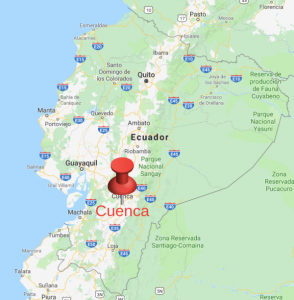 With a growing city population of approximately 350,000 people (over 600,000 including the entire Cuenca canton), Cuenca is Ecuador’s third-largest city. Cuenca was founded as a Spanish settlement in the mid-1500s. But traces of civilization go way back to over 10,000 years ago! Perhaps most notably, Cuenca was once inhabited by the Incas, as evidenced by ruins that visitors can still see from right within the city today.
With a growing city population of approximately 350,000 people (over 600,000 including the entire Cuenca canton), Cuenca is Ecuador’s third-largest city. Cuenca was founded as a Spanish settlement in the mid-1500s. But traces of civilization go way back to over 10,000 years ago! Perhaps most notably, Cuenca was once inhabited by the Incas, as evidenced by ruins that visitors can still see from right within the city today.
The city’s full name is Santa Ana de los Cuatro Ríos de Cuenca. That’s quite a mouthful, so almost everyone simply refers to the city as “Cuenca” instead. The translation of this lengthy city name references the four rivers that run through Cuenca. One of those rivers pleasantly slices right through the center of town, making for a particularly nice stroll.
Cuenca is also known as the “Athens of Ecuador.” The charming colonial streets of Cuenca do give off a certain European flair. But this nickname is not only a reflection of Cuenca’s architecture, cathedrals, and ruins. It’s also a reference to Cuenca being a long-held hub of culture, art, and artisanry.
It’s this history and traditions that have helped make the historic center of Cuenca to be designated as one of only three of Ecuador’s cultural UNESCO World Heritage Sites. (The others are the Inca Andean Road System and Quito).
UNESCO further recognizes Cuenca for its centuries-old colonial architecture. Cuenca’s city planning has been respected and followed here for more than 400 years. You can read the full UNESCO description outlining Cuenca’s universal value here.
Cuenca is largely a safe city in Ecuador. It carries a pleasant and tranquil vibe. Local people are notoriously welcoming and friendly. And we found there to be little threat of petty theft and pickpockets, as there is in some of Ecuador’s larger cities.
Between Cuenca’s friendliness, colonial charm, Andean culture, beautiful mountain scenery that surrounds, and the consistently pleasant climate, it’s no wonder that many foreigners are traveling here. Cuenca is becoming not only a popular travel destination in Ecuador. Expats and retirees are moving to Cuenca to make it their new home. There’s certainly lots of appeal here to do so!
After all, there are so many great things to do in Cuenca itself in addition to the many day trips, that make it well worth a lengthy stay. We now hope this detailed Cuenca, Ecuador travel guide helps to highlight exactly that!
Best Things to Do in Cuenca Ecuador
There are so many awesome things to do in and around Cuenca. Simply strolling the cobblestone streets of Cuenca’s historic city center can be a fantastic casual pursuit while touring around the city. Undoubtedly, visitors will do exactly that while exploring the many recommendations laid out in this Cuenca travel guide.
We hope this list of things to do in Cuenca provides some solid ideas on what to do around town. Also, here’s a handy Cuenca map to help find your way around to all the points of interest listed throughout this travel guide.
1) Climb the Towers of Cuenca’s New Cathedral
Cuenca’s Cathedral de la Inmaculada is a centerpiece of the city that is commonly referred to as the New Cathedral. Although construction began in 1885, the cathedral was not completed until nearly a century later (1975). That’s why it’s referred to as the “new cathedral.” The cathedral’s signature blue domes have defined Cuenca’s skyline ever since.
A visit inside this grand Catholic church is a must-do while visiting Cuenca. The New Cathedral is among some of the largest churches in South America. The massive interior is said to be able to fit over 9,000 church-goers. Cuenca’s New Cathedral is easily accessible and open to the public, as faithful Cuencanos pop in throughout the day to worship.
As long as visitors are dressed modestly and service isn’t going on, don’t hesitate to quietly explore the New Cathedral’s vast interior. You’ll find plenty of marble and stained glass to admire. Take a look at the gold leaf-covered altar. Also, find the wooden replica of the cathedral (towards the front right, facing the altar). Perhaps even consider lighting a candle.
But don’t stop there. Many visitors don’t realize that it’s possible to climb up the towers of the Cathedral! There’s a small ticket booth just as you enter the cathedral’s northern (right-side) entrance that grants access to a narrow spiral staircase.
It takes many steps to reach the top, where the effort is rewarded with fantastic views of Cuenca’s historic center. You’ll also get an up-close look at the Cathedral’s pretty blue domes. (Note: the domes were still undergoing renovations in early 2019, but efforts should be wrapped up by the time you’re reading this.)
There’s also a plaque up here explaining why the bell towers you’re standing on don’t contain any bells. It describes why the church was left unfinished and incomplete. We won’t give it all away though. You’ll have to go to Cuenca’s New Cathedral and climb those steps to find out!
💲Cost: Free to enter, $2 admission to climb the towers
🕒 Hours: 8:00 am-7:00 pm
⌚ Length of visit: 15 minutes + 15-30 minutes if also climbing the New Cathedral towers
📍 Location: Right in the center of Cuenca in front of Parque Calderón, located here.
2) Get a Limpia (Traditional Cleansing) at the Local Market
The Mercado 10 de Agosto is a local Market in Cuenca, where residents come to stock up on fresh fruits and vegetables, among other local products. It’s a great place on its own merit to simply see all the local produce and soak in the market atmosphere.
Consider buying some fruit while you’re here! There are also many exotic fruits to discover, like tree tomatoes and naranjillas, that you may not have access to at home.
Just be aware that the bundles of produce tend to be priced by the dollar. So if you’d like a single banana, that’s not going to happen. A dollar will likely buy you over 10 bananas!
Yet another reason to visit this local Cuenca market is to experience a “limpia.”
A limpia is a traditional cleansing that has been passed down through generations. On the bottom floor of Mercado 10 de Agosto, there is a steady stream of customers partaking in this traditional cleansing. Pregnant women and babies appear to form the largest base of limpia clients. Yet everyone from working-class men to sweet old abuelas come to Mercado 10 de Agosto to seek this treatment.
This spiritual cleansing process is meant to help rid anything terrible from within. It’s interesting to watch the action of what’s involved in the cleansing. Yet for a real cultural experience while in Cuenca, visitors can consider jumping right in to get a limpia too!
But before you go ahead with getting a limpia in Cuenca, just know what you’re in for. This video provides a primer of the process.

Those being cleansed may endure a fair bit of being roughed-up by various plants and herbs. A raw uncracked egg is rubbed around the body as part of the cleansing. It’s a diagnosis mechanism. Strong herbal alcohol fumes are breathed in too. And a process known as baño de flores, or flower bath, involves having a mouthful of flower petals being spit at you. Yes, really.
It all makes for quite the travel experience and arguably one of the most interesting cultural things to do in Cuenca.
💲Cost: Free to enter the market. A limpia costs $2-$3
🕒 Hours: 7:00 am-6:00 pm
⌚ Length of visit: Spend 15 minutes looking around. A limpia takes 5-10 minutes.
📍 Location: In Cuenca’s historic center, a few blocks southwest of Parque Calderón, located here.
3) Stroll, Bike, or Picnic Along Cuenca’s Rio Tomebamba Riverfront
Running along the southern edge of Cuenca’s historic center is a scenic stretch of the Tomebamba River. The river originates up in the mountains of Cajas National Park and flows onward down into the Amazon. On its way down the Andes, the river slices right through the middle of Cuenca.
The Tomebamba River makes for a most pleasant place in Cuenca to take a leisurely stroll from right within the city center. The grassy riverbank is lined with trees that offer shade on sunny days, while colonial buildings loom above. There are a few cafes and restaurants with views along this section of the Tomebamba River. Don’t hesitate to pop in for a coffee, cerveza, or a snack.
Better yet, consider a picnic right along a grassy stretch of the river. Many canoodling Cuencano couples can be found doing just that.
And if you happen to be in Cuenca on a Sunday, consider going for a bike ride along the Tomebamba River. Every Sunday morning here in Cuenca, the city provides hundreds of mountain bikes to residents and visitors for free. It’s known as Ruta Recreativa.
This gives everyone an opportunity to bike on the off-road trails that extend further down the river. On two wheels, you’ll be able to get much further than walking. To get a free bike on Sunday mornings, just exchange an ID or passport and off you go!
💲Cost: Free
🕒 Hours: Walking along the river is best during daylight hours. Sunday bike rentals: 8:00-Noon (Arrive early to ensure you’ll get a bike.)
⌚ Length of visit: About 1-2 hours, depending on the length of walk/ride
📍 Location: Free bike rental station is at Paseo 3 de Noviembre & Puente Juana de Oro, next to Inca Bar. The riverside trails extend 13 kilometers through Cuenca.
4) Learn About Cuenca’s Production of Panama Hats
Ecuador, not Panama, is the origin and production center to what is well-known around the world as the “Panama Hat.” The reason for this confusing name is because these Ecuadorian hats were being exported to Panama while the Panama Canal was being built in the early 1900s. Then US President Roosevelt visited the construction site and was photographed wearing the hat in Panama. Hence the name “Panama Hat” has stuck ever since.
But make no mistake, this is purely an Ecuadorian product. The town of Montecristi lays claim to the birthplace of Panama hats. Yet it is Cuenca and the surrounding area that has become the largest producer of these hats, which are also known locally as sombreros de paja toquilla.
So when visiting the city, a great thing to do in Cuenca is to learn about the delicate process it takes to produce these hats. You’ll see just how the hats are weaved with painstaking detail, entirely by hand. There are a few factories, “museums,” and shops around Cuenca to explore the craft of this truly Ecuadorian tradition.
Two of these Panama Hat museum/factories are:
- Museo Sombrero De Paja Toquilla
- Homero Ortega Museum
Museo Sombeweo de Paja Toquilla. Within Cuenca’s historic center, it’s easy to get to the Museo Sombrero De Paja Toquilla. It’s more of a shop than a true “museum,” despite having a few very basic exhibits. Yet it’s still definitely worth going into, to see the fine craftsmanship and possibly purchase a hat. There’s also a very pleasant café in the back, overlooking the Tomebamba River.
Homero Ortega Museum. A more complete look into these famous Ecuadorian hats can be found at the Homero Ortega Museum. This is more of an actual museum, where a guide accompanies visitors on a free 30-minute tour. During this tour, you’ll learn about the history of this Ecuadorian tradition while taking a look directly into the hat-making process.
This fifth-generation company claims to be the oldest and most experienced Panama hat producer in Ecuador. So they’re well-equipped to explain all about Ecuador’s famous hats. Of course, museum-goers exit through the gift shop. There, you’ll be greeted with a friendly, no-pressure sales attempt.
💲Cost: Both museums are free.
💵 Price of Panama Hats in Cuenca: Expect to spend somewhere between $40-$100 for a good quality hat. They range in price, starting at about $20 for cheaper looser-woven hats that take only a day or two to make. Meanwhile, superfinos can cost as much as $1,500 which takes nearly a half year to produce.
🕒 Hours: Museo Sombrero De Paja Toquilla: Weekdays 8:30-6:30, Sat: 9:30-5:00, Sun 9:30-1:30.
Homero Ortega Museum: Weekdays: 8:00-12:30 & 2:30-6:00, Sat: 8:30-12:30, closed on Sundays.
⌚ Length of visit: 30-60 minutes at Homero Ortega Museum. Less time at Museo Sombrero De Paja Toquilla.
📍 Location: Museo Sombrero De Paja Toquilla in the historic center, located here.
Homero Ortega Museum: Near bus terminal, located here.
🔗 Official website: of Homero Ortega Museum here.
5) Take in Cuenca’s Sweeping Views from the Turi Viewpoint
The Mirador de Turi is a lookout point perched high above the city, with spectacular views down below. Many of Cuenca’s churches and avenues can be easily seen from this high point located on the southern fringes of the city. It makes for a fantastic place for photos, whether attempting to capture the cityscape or to snap a few Cuenca selfies.
Adjacent to the lookout is also the Parque Extreme Turi, a small adventure park. It’s well worth the $1 admission fee and the short stair climb to reach what we believe is an even better view than the initial mirador.
Daredevils can further enjoy some thrills, for an additional yet nominal cost ($1-$3 each). The extreme activities include ziplines, swing bridges, high-flying swings, and a “crazy ball” that launches any takers into the air.
To get to the Mirador de Turi and adjacent adventure park, it’s most easily accessed by taxi. Expect a cab fare around $2-$5 each way, depending on where in Cuenca you’re coming from.
Alternatively, it’s possible to walk up to the Mirador de Turi. Just be prepared to ascend the nearly 500 steps to get to Cuenca’s most famous lookout point.
💲Cost: Mirador is free, Parque Extreme Turi is $1
🕒 Hours: Best to go during daylight hours. But also consider evenings to see Cuenca light up.
⌚ Length of visit: Plan 15 minutes if only going to the Mirador. Plan an hour or so if entering the adventure park.
📍 Location: On the south side of Cuenca, located here. Take a taxi ($2-$5, each way). Or use the hop-on-hop-off bus ($8 roundtrip).
6) Discover Cuenca’s History Through Its Museums
There are a number of museums in Cuenca. Many of them focus on Ecuador’s history and Cuenca’s in particular. Some of these museums are free. So it’s certainly worth taking some time to learn more about the culture and history of the country you’re visiting. In the process, you may even find some interesting oddities, like shrunken heads!
So what are the best museums in Cuenca? Here are our top picks.
For indigenous culture: A great place in Cuenca to begin a foray into Ecuador’s past is at the city’s Pumapungo Museum. It’s the largest museum in Cuenca and many vouch that it’s the best. The bottom floor contains modern art exhibits in addition to some ancient artifacts. Yet it’s the second floor that dives deep into Ecuador’s indigenous culture and history. This is where you can find the curiosity-inducing shrunken skull exhibit.
💲Cost: Free
🕒 Hours: Tues-Fri: 8:00-5:30, Weekends: 10:00-4:00. Closed Mondays.
For ancient relics: For an even more in-depth look into Ecuador’s ancient artifacts, the Museo de las Culturas Aborígenes is a must-visit for any archeology buffs. Their collection of over 5,000 artifacts is the most vast we’ve seen in Ecuador. Even those with only a mild interest Pre-Colombian artifacts may be amused by the ancient “love carvings” displayed from the Tolita culture.
💲Cost: $4
🕒 Hours: Weekdays: 9:00-6:00, Sat: 9:00-2:00, Closed Sunday
For religious history: The Religious Art Museum is housed in the Cuenca’s Old Cathedral. This temple goes way back to the 1500s. A recorded audio tour (in English) tells all about its nearly 500-year history of this church, with great detail and enthusiasm.
💲Cost: $2
🕒 Hours: Weekdays: 9:00-5:30, Weekends: 9:00-2:00.
7) Explore Cuenca’s Inca Ruins from Right Within the City: Pumapungo Archaeological Park
In the back of the Pumapungo Museum, there are doors to the outside that lead to what is left of an ancient ruin site known as Parque Arqueologico del Pumapungo. The ruins found here are believed to be a part of the ancient city of Tomebamba that was first inhabited by the Cañari people before the Incas overtook it for use as a fort.
It’s theorized that the structures once here may have been destroyed during a civil war between the Incas. The remaining stone was later used by the Spanish in the construction of Cuenca. Because of this, it’s the foundations and stone terraces that remain today.
Walking down the side of this former fortress leads to a garden showcasing crops of the ancient civilization. That’s also where you can get the best glimpse of this ruin site that lies intermingled with the city of Cuenca. This is a great thing to do in Cuenca coupled with the adjacent and aforementioned Pumapungo Museum. Plan to spend a few hours between the two Cuenca attractions.
💲Cost: Free
🕒 Hours: Tues-Fri: 8:00-5:30, Weekends: 10:00-4:00. Closed Mondays.
⌚ Length of visit: About an hour
📍 Location: Behind the Pumapungo Museum, located here.
8) Encounter Ecuador’s Native Wildlife at this Rescue Center: Amaru Biopark
Cuenca’s Amaru Biopark is a non-profit conservation organization that rescues animals from situations like illegal trafficking and circuses. This allows the rescued animals to live out happy lives on the side of the mountains surrounding Cuenca in sizable spaces with lots of room to roam.
The wildlife park is so full of species native to Ecuador, from the high Andes to the Amazon. Most people traveling through Ecuador likely won’t be lucky enough to encounter native species such as jaguars and Andean bears in the wild. So Amaru Biopark provides visitors a rare chance to see them.
Yet what’s really unique about this place is the layout. Amaru Biopark is sprawled all across the mountainside. Rugged hiking trails connect each of the different habitats. This makes it necessary to trek a few kilometers while visiting the animal residents along the way.
It’s so cool to get a little workout while learning all about the biodiversity that exists throughout Ecuador. It’s also nice to find strong conservation messages, all along the way. It’s one of the most un-zoo-like zoos we’ve ever encountered in the world.
9) Unwind in the Warm Volcanic Mineral Water of Baños
On the outskirts of Cuenca is the community with several spas, known as Baños. (Note: this is not to be confused with the more well-known Baños of Ambato, which is several hours away.) This Baños, here in the Azuay province, is a mere 10-minute drive from the center of Cuenca.
It boasts natural warm spring waters that are rich in minerals from the thermal activity occurring underground. The Ecuadorian Andes are full of volcanos after all!
Always on a lookout for luxury-for-less experiences, our Cuenca spa recommendation is for Piedra de Agua. Their 3-hour “spa circuit” includes eight treatments ranging from Turkish baths to steam baths to subterranean contrast pools. Perhaps most interesting is the volcanic mud exfoliation treatment, involving two different mud baths. The red mud cleans and exfoliates the skin. The blue mud then acts hydrate and moisturize. Together, they leave skin incredibly soft and smooth!
During weekly promos at Piedra de Agua, couples get a 2-for-1 deal, dropping the price of the entire circuit to a mere $17.50 per person. If traveling solo, find a friend to take advantage of this deal! In doing so, the spa can make for a fantastic affordable luxury.
If that wasn’t nice enough, this spa combines the 2×1 spa circuit deal with 2-for-1 cocktails. And they’ll even deliver those drinks to you on a little floating boat. We can personally recommend a cool mora (blackberry) daiquiri to enjoy in these warm waters. At the end of the spa circuit, guests can spend as much time as they’d like relaxing in the three warm outdoor mineral pools.
A trip to the Piedra de Agua spa can feel absolutely heavenly for anyone who has been doing lots of hiking in the surrounding Andes mountains. It can be the perfect way to clean up and relax after a day trip to Cajas National Park.
At time of publishing, the 2×1 spa circuit deal runs on Monday 11-5 and Wednesdays & Fridays from 5-10. As promotions can change, be sure to check their promo page to verify these deals are still in place during your visit. No advanced reservations are required.
💲Cost: The spa circuit is normally $35 per person. But it’s 2-for-1 with the aforementioned promotion. The cost to access the thermal pools without doing the spa circuit is $12. Prices for additional treatments, like massages, vary.
🕒 Hours: Monday-Saturday: 6:00 am – 10:00 pm. Sunday: until 9:00.
⌚ Length of visit: Plan at least three hours for the full spa circuit. Consider additional time to relax in the pools, have some drinks, eat at the onsite restaurants, or get a massage.
📍 Location: On the west side of Cuenca. Best to take a taxi, about $5 fare each way. Or try the #12 or #100 bus. Piedra de Agua is located here.
🔗 Official website: here.
10) Wander Through Cuenca’s Impressive Flower Market
Ecuador is the third-largest flower exporter in the world. The country is particularly known for its high-quality roses. But not all of Ecuador’s flowers leave the country. This is evidenced in Cuenca’s beautiful flower market.
Cuenca’s colorful flower market is located in a prime setting, right next to the New Cathedral. It provides a picturesque backdrop to this plaza that’s filled with dozens of flower vendors. Known locally as the Mercado de las Flores, it’s well worth stopping in the open-air square to admire all the beautiful arrangements for sale.
This picturesque plaza even caps the National Geographic list of the Top 10 Outdoor Flower Markets in the world. It’s their only entry in all of the Americas.
Even if you’re just there to have a quick look, a visit to the flower market is a very worthwhile thing to do in Cuenca.
💲Cost: Free
🕒 Hours: Daylight hours and a bit into the evening.
⌚ Length of visit: About 10 minutes
📍 Location: In Cuenca’s historic center, right next to the New Cathedral, located here.
11) Drink the Agua de Pitimas While At the Flower Market
At one end of the flower market, there’s a window offering a mysterious flower-based drink known as Agua de Pitimas. This flowery water concoction is made by nuns who live in complete seclusion inside adjoining monastery They formulate this pink drink with a secret recipe that’s been passed down for decades. It uses dozens of flowers and herbs.
This Agua de Pitimas is supposed to be a cure-all for many ailments. It’s even recommended by local doctors to help with anxiety and sleeplessness. The drink must be doing something right because there are regular queues of people lining up at the cloister window to get a $0.50 cup of this fragrant water. As it’s made from many different flowers, it’s not surprising that the drink tastes quite perfumey.
A local Cuencano told us that the nuns are actually adding drops of valium (Diazepam) to the water and cited it as fact. He says that’s really the secret to agua de pitimas! We couldn’t find any other information to corroborate this claim. Yet the sheer calmness that soon overcame us is proof enough for us to totally believe it. We recommend sipping a cup only if you’re ready to relax.
12) Eat Cuenca’s Local Cuisine
You can find nearly all Ecuador’s local specialties throughout Cuenca. Popular Ecuadorian dishes like churrasco, locro de papa, fritada, and seco de chiva are all here, among others. Yet when in Cuenca, there are some regional specialties to the city itself and to the Azuay province that visitors can try.
Some of these dishes can be difficult to find in Ecuador, outside of this region. So here are the hyper-local foods to try in Cuenca!
For a Cuenca Staple: Eat Mote Pillo
This is a signature staple food of Cuenca that is made with mote, AKA hominy (dried corn treated with alkali) and mixed with eggs. It’s simple, delicious, and often used as a side dish. 🌱 Note: Strict vegetarians and vegans should be aware that while it seems meatless, mote pillo is cooked with pork lard.
Mote is further used in many Cuencan dishes. Also, keep an eye out for mote pata (a mote-based soup) and mote sucio (mote and pork).
For a Market Tradition in Cuenca: Eat Hornado
This is whole-roasted pig. In Cuenca, it’s often seared with a blow-torch. The hornado is tender, well seasoned and usually served with mote, vegetables, and llapingachos or potatoes. It’s delicious and definitely something for any meat-eater to try when traveling through Cuenca.
Hornado is a great market food and can be easily found during lunchtime at the Mercado 10 de Agosto and Mercado 9 de Octubre. They’ll usually let you try before you buy. Also, consider heading out to Av Don Basco, which is known locally as “Pig Road” because of the many competing restaurants here serving up hornado right from the spit.
For Adventurous Eaters: Try Cuy in Cuenca
Yes, the Azuay province is an area of Ecuador that does indeed eat guinea pig, known here as cuy. It’s a local specialty for adventurous eaters to try in Cuenca. Most people either enjoy it or despise it. Personally, we find it to just be okay. There’s not much meat to it and the skin can be a bit rubbery. But, hey, when in Cuenca!
Guijebamba is the oft-recommended restaurant in Cuenca to try cuy. But be aware that Guijebamba requires a call-ahead order (or a very long wait) to prepare. You’ll also need to order an entire cuy, which is $22. So it’s not particularly conducive for anyone who may simply want to try cuy for the first time.
Instead, look for cuy at the aforementioned Av Don Basco. Or we can personally recommend Picanteria Reine del Cisne, near the Mirador de Turi. Here, you can order a 1/4 cuy meal for $5.50 or even a mixed hornado and cuy plate for $8.50. That way you’ll have plenty of other food to fall back on if you decide the cuy isn’t to your taste.
 Other Cuenca Foods To Look For
Other Cuenca Foods To Look For
That all just scratches the surface of some of the typical foods in Cuenca to try. When in Cuenca, also consider trying these regional dishes:
- tamal cuencano (cornmeal tamale that typically includes fillings such as pork, cheese, and egg),
- pan cuencano (Cuencan bread),
- La Fanesca (a special soup eaten during Holy Week),
- corn tortillas with morocho (a thick, sweet, and spiced corn-based drink)
- fresh trout from the Cajas mountains,
- and other local Cuenca specialties.
13) Drink Beer Around the World Locally Produced in Cuenca
There is a thriving international beer scene that’s brewing up fantastic results from the Andean waters flowing into Cuenca.
Cuenca boasts a large immigrant/expat community after all. And this clearly shows throughout the city’s brewpubs. Nowhere else in South America have we seen such a vast array of local breweries representing their home styles from abroad.
Here are some interesting international breweries to check out while roaming around Cuenca:
🇧🇪 Jodoco Belgian Brew: There is a legit Belgian brewery with a Belgian brewer who concocts delicious Saisons, Tripels, Quadruples, and Farmhouse sours. They’re spot on the authentic styles found throughout Belgium. Fun fact: Jodoco claims to be the highest Belgian Brewery in the world! 💲It’s $3.90 for their 300 ml beers.
🇨🇿 Golden Prague Pub: Czech brewers just moved into Cuenca a few years ago, opening up a sizable brewery with classic Czech Lagers served alongside fare from their homeland. 💲 It’s $3 for 330 ml beers and $5 for pints (500 ml). Note: 2×1 happy hour daily 3:00-6:00 pm.
🇩🇪 Far Out Cerveceria Alemana: Germany is represented by a classic rock-loving German brewer who produces three styles from his home country, ranging from a kolsch to darker beers. 💲Prices start at $3.50 for 300 ml beers and go up.
🇺🇸 The Pub: There’s an American-run brewpub pouring pints of craft beer styles that have been popularized in the US, like west-coast style IPAs. Yet they further represent other countries, such as their delicious Scottish Ale. 💲Pints for $4. Drops to $3 during happy hour, which is all day Wednesday, Thurs 5pm-7pm and Sat, 3pm – 5pm.
It’s pretty remarkable to be in a city with so many international beer offerings that are brewed locally right here in Cuenca.
14) Shop for Andean Artisan Crafts in Cuenca
Cuenca and the surrounding villages have become a center for artisan crafts in Ecuador. It’s a great place to shop for ceramics, woven goods, wood carvings, jewelry, housewares, utensils, furnishings, baskets, and many other uniquely Ecuadorian souvenirs.
There are two main markets in Cuenca that make for particularly great craft shopping:
- Plaza de San Francisco and
- Mercado de Artesanias Rotary.
In early 2019, the Plaza de San Francisco finished a major renovation, which took a year and a half to complete. The attractive plaza is now sparkling like new and even has a nice red Cuenca sign that makes for great photo ops. Plaza de San Francisco also boasts the New Cathedral’s domes as a backdrop. Dedicated craft stalls were also added for vendors to sell their artisan wares in this picturesque plaza, right in the heart of Cuenca.
Meanwhile on the northeast fringes of the historic center is the Mercado de Artesanias Rotary. This market offers even more opportunities for bargain-hunters to walk away with some great local finds. Shop away!
15) Relax and Discover Parque Calderón
While roaming around Cuenca, you’ll certainly cross Parque Calderón many times. It’s Cuenca’s most central plaza. It’s directly in front of the city’s centerpiece, Cuenca’s New Cathedral.
This central square is an enjoyable place to sit in one of the many park benches to relax and soak in the local life happening around. You can get your shoes shined here. Enjoy a snack. Or practice your Spanish with a Cuencano.
And like most of Cuenca’s plazas, Parque Calderón is connected. So you can use the wifi to catch up on emails, access this article again, or post a picture of Cuenca on Instagram to let all your friends know how much fun you’re having!
But don’t get too comfortable. There’s plenty to explore on the outskirts of Parque Calderón. Some of these points of interest are hidden in plain sight.
For example, on the northeast corner of the plaza, you can find a government office that is guarded and looks uninviting. But go inside, walk upstairs, and ask the receptionist if you can access the exterior. She may let you on the balcony for fantastic views of Parque Calderón and the New Cathedral. Note: some minimal Spanish, smiling, and gesturing may be required. It can be great for photo ops!
Another interesting building here you may not know can be entered is Provincial Court and Judicial School. It’s found on the southeast corner of Parque Calderón. The court is a beautiful building to explore and visitors are free to walk right inside. It’s there you’ll find a most pleasant courtyard, with three levels that are lined with murals and artwork. Take a look around!
Additionally, consider taking a look into the 16th-Century Old Cathedral, as already mentioned in Thing to Do in Cuenca #7.
If you’re ready for a sweet treat, pop on into Tutto Fredo and choose among the many different ice-cream flavors, to then enjoy back out in the plaza.
Take a stroll down the pedestrian walkway of Calle Santa Ana, where you’ll be entrapped by the tall looming walls of the New Cathedral.
And if you need some more friendly advice or a map of Cuenca, don’t hesitate to ask some questions at the tourism information center on the south end of Parque Calderón.
🗺️ On your own: Pick up a handy tourism map from the tourist information center and set off on your own for some DIY explorations in Cuenca.
🚶 Cuenca Free Walking Tour: Every day at 10:00 am, there is a free walking tour of Cuenca that begins at Parque Calderón. It’s about two hours long and conducted in both Spanish and English. The walking tour begins at this central plaza and discusses the buildings that surround it, continues to the Flower Market (#5), goes through Plaza de San Sebastian (#13) delves into Mercado 10 de Agosto (#2), before ending at the Panama Hat museum/shop (#4). So you’ll hit up at least five of our recommended things to do in Cuenca during this free walking tour. Tips are accepted at the end of the tour.
🚐 Hop-On-Hop-Off Double Decker Bus Tour: This sightseeing tour of Cuenca delivers excellent value, as a mere $8 gets passengers a 1 hour and 45-minute tour of the city (or longer if hopping off). After departing from Parque Calderón, the bus makes stops at Plaza de San Sebastian (#13), the Homero Ortego Panama Hat Museum (#4), the Pumapungo Museum (#7), and even climbs up to the Mirador de Turi (#6), before descending down to Cuenca’s big Mall del Rio and then returning to Parque Calderón. The buses depart nearly every half hour from 9:30 am – 7:00 pm, excluding the lunch hours of 1:00 and 1:30. Buy your tickets at the stand at Parque Calderon or reserve your spot in advance online with Viator.
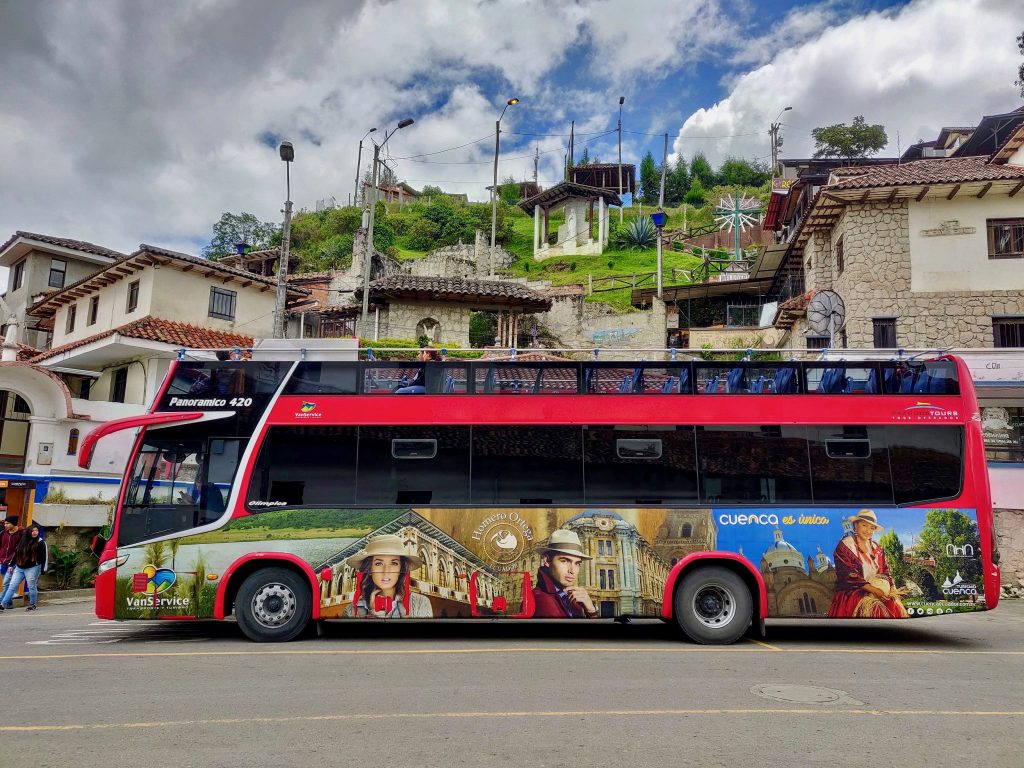
Best Day Trips to Do from Cuenca
Perhaps some of the best things to do in Cuenca, aren’t technically in Cuenca at all.
In addition to all the things do to in Cuenca itself, the city makes an ideal base to further explore the Azuay Province that Cuenca is the capital of. The previously mentioned 15 things to do in Cuenca can likely be experienced within a few days. Yet there are many more awesome things to do further afield, which can help to justify a longer stay in Cuenca.
Hiking, waterfalls, artisan towns, and Inca ruins abound. They can each be accessed by public transport or tours. We’ve got all the details and directions to help you reach these interesting excursions from Cuenca. So to inject some adventure into your stay, be sure to pursue what we’ve found to be the best day trips from Cuenca!
16) Hike Cajas National Park: A Trek Through Otherworldly Landscapes
If you only have time for a single day trip from Cuenca, let it be Cajas National Park.
Imagine a place that looks a bit like the green hills of Scotland, feels like the arctic tundra, is full of swampy wetlands, yet has firm trails that are like wandering into a dark forest straight from a fairy tale. That’s our best attempt to describe what it’s like to go roaming around Cajas National Park!
Cajas is a wild and unique alpine environment that boasts nearly 300 lakes. Ponds and streams spill across the tundra landscape, spread across this portion of the Andes. It all takes place over mountains that rise well over 3,000 meters in altitude!
This high mountain environment in Cajas National Park can be notoriously cloudy, foggy, and even rainy. Yet that it still doesn’t distract from the otherworldly beauty shining through. And if you’re lucky enough to catch this scenery on a clear and sunny day, you’re in for a real visual treat.
It’s also interesting to note that the Continental Divide of South America runs right through the ridgeline spine of Cajas National Park. Cajas further claims the superlatives of having the most biologically diverse portion of tundra in all the Andes. It even has some of the highest forests in the world! The Polylepis trees that grow here have managed to adapt to this high-altitude environment.
Cajas is a big national park. Yet most visitors come to the Laguna Toreadora ranger station (3,850 meters). That’s where there’s also a visitor center and restaurant. Even if you’re not much of a hiker, it can still be well worth the trip here to soak in the raw natural beauty. The mountains and lakes can be seen from the short boardwalks and lookouts leading from the visitor center.
Yet it’s the trekking throughout Cajas National Park that really makes it a worthwhile day trip from Cuenca. There are a few routes to consider.
When registering upon arrival, a ranger will review the routes with you and offer recommendations based upon the desired length. “Route 1” can make for an ideal half-day hike. It’s said to take 4-5 hours to complete the 5-kilometer loop trek. But we find that 2-3 hours is a more realistic estimate. It’s a scenic route that passes by several lakes, crosses a few rivers, and enters a Polylepis forest.
Warm home-cooked meals, including fresh Cajas trout, can be enjoyed upon returning to the visitor center for lunchtime.
💲Cost: Free
🕒 Hours: 8:00 am – 4:30 pm.
📱Important: Download These Apps: Trails in Cajas aren’t particularly well-marked. If visiting Cajas on your own, be sure to download these apps, which can be used offline to help navigate while in Cajas. There is no cellular service at the National Park, but the offline maps still work with GPS, no data or wifi required.
Android: Parque Nacional Cajas app and Maps.me
iPhone: Parque Nacional Cajas app and Maps.me
🚌 How To Get From Cuenca To Cajas by Bus: Those comfortable with independent travel can reach Cajas by buses, departing from Terminal Terrestre in the morning at 7:00, 8:00, 9:15, and 10:20. Although there are later buses, it’s not recommended, as you won’t have enough time at Cajas. Also, a daily visitor limit allows only 92 people each day. So go early. To find the Cajas bus, depart through the gate marked Turno 4 and locate platform Andén 25. The fare is $2 each way, paid on the bus. To return to Cuenca, flag down a passing bus.
🚐 Hiking Tour of Cajas National Park: For a much easier and informative way to visit Cajas, skip all the logistics involved with the bus and the potential of getting lost on the loosely marked trails. Instead, take this highly-rated hiking tour. The price includes hotel pick-up in Cuenca, a hot lunch at a restaurant, a 3-hour guided hike at the Toredora area, and a subsequent 1.5-hour hike at the Llaviuco area. Read reviews, check availability & prices.
17) Go Horseback Riding Through the Andes: Centro Ecuestre Bellavista
In the mountains just south of Cuenca, there is an incredible horseback riding adventure that awaits! A very professional stable offers a variety of trail rides through this scenic section of Andes. The horses here are very well cared for by Sebastian, who runs the stable and leads the trail rides during his tours that are conducted in either English or Spanish.
The most popular ride is the 2-hour route that ascends up the Frances Urco hill. This route begins by clopping through rural farming communities, where locals are tending to the crops and dairy cows. The dirt road through the farmland eventually transitions to a trail that rides up a tree-lined ridge. It’s actually an old Inca trail that soon opens up to 360-degree views of the rugged Andean landscape that surrounds.
It all makes for a most memorable half-day trip from Cuenca that we highly recommend.
💲Cost: $40 for 2-hour ride
🕒 Hours: 8:00-6:00, but reservations are required. Contact Sebastian for availability and times.
🔗 Reservations & More Info: Email Sebastian at centroecuestrebellavista@hotmail.com or fill out the reservation form found on the Centro Ecuestre Bellavista website.
🚕 How To Get From Cuenca To Bellavista Equestrian Center: It’s best to take a taxi. Expect $5-$8 taxi fare each way. It’s located here and takes 15-30 minutes to get to, pending traffic.
18) Descend to a Cloud Forest to See a Massive Waterfall: El Chorro de Girón
An approximately 1.5-hour drive south of Cuenca lies the small village of Girón, where visitors can find a huge 70-meter (230-foot) high waterfall! The trails through the lush cloud forest environment are scenic on their own merit. Yet the main attraction is the plummeting falls known as Cascada El Chorro or the Giron Waterfall.
It’s just a short hike of less than a kilometer to reach the giant waterfall. Further adventure activities abound such as a high-flying swing, ziplines, and a swing bridge that spans the valley in front of the waterfall ($3). A few restaurants have set lunch ($5) near the base of the waterfall help to help make this excursion a more complete day trip from Cuenca.
There are some additional hiking trails to consider exploring more waterfalls in the area. But we were advised not to go due to recent heavy rains eroding the trail during the time of our last visit. We were told to come back, so that’ll likely be all cleared up for those who want to pursue a longer hike while at the Giron waterfalls. The trails to the upper falls and the lookout points are well marked on the maps.me app that can be used to navigate offline while visiting. (download on Android, download on iPhone).
The Giron waterfalls are an awesome natural sight for nature-lovers to seek out while based in Cuenca.
💲Cost: $2 admission
🕒 Hours: 8:00 am – 6:30 pm.
🚌 How To Get From Cuenca To Giron by Bus: Those comfortable with independent travel can easily reach Giron by bus, with regular departures from Terminal Terrestre approximately every 30 minutes. Depart through the gate marked Turno 4 and find platform Andén 24. The fare is $1 each way, paid on the bus. From the town of Giron, it’s an additional $5 taxi ride, each way to the El Chorro waterfall, which is located here.
🚐 Tour of Giron Waterfalls: For a much more convenient and complete way to visit the Giron waterfalls, consider this private tour. It includes hotel pick-up, a stop a Tarqui Valley, a guided nature hike to the waterfall, an included lunch at a restaurant, and then continue further onto the sacred Busa Lake. This private tour is a great way to explore the Giron area during a very complete 8-hour tour. Rates become more affordable, the more people you have in your group. Check prices and availability for your travel dates.
19) Visit Azuay’s Artisan Towns: Gualaceo, Chordeleg, and Sigsig
To the east of Cuenca lies a string of small towns that are perhaps best known for the handicrafts they produce. Yet we found these communities to be pleasant to visit, even for non-shoppers like us. A Sunday visit can be appealing to find these towns at the most bustling among leisure-going locals. Yet the trade-off is that some shops may be closed.
What to Do in Gualaceo
Known as the Garden of Azuay, Gualaceo is the closest of the artisan towns to Cuenca and hence makes a logical first stop. It’s also the largest. Here are some things to do in Gualaceo:
- Wander the historic center: Be sure to find the Central Church of Gualaceo and the broad plaza that lays at its doorstep, both of which anchor Gualaceo’s historic center.
- Eat Hornado: Gualaceo is known for its hornado (pork) and there are dozens of vendors eager for you to try theirs by offering hearty samples and compliments. Find them on the second level of Mercado 25 de Junio. ($3-$5, priced by size of plate.)
- Stroll along the riverfront: During the weekends the Rio Santa Barbara comes alive with locals picnicking along the rivers grassy shoreline, which makes for a nice place to soak in the local vibes. Walk along both sides of the banks.
- Walk over the covered bridge: This is the only covered bridge we’ve ever seen in Ecuador, making it a novelty to check-out while visiting Gualaceo.
- Go for a boat ride: On weekends a small boat offers boat rides up the Santa Barbara river.
- Shop for artisan goods: While Chordeleg provides for a better place to shop, there are some new stalls set up in Gualaceo’s main plaza selling various local handicrafts. Local artisan wares could also be found here.
What to Do in Chordeleg
Just a few kilometers south of Gualaceo is Chordeleg. We found this quaint town perched up in the mountains to have the best tourism infrastructure and the best shopping opportunities of the three artisan towns. Chordeleg is particularity known for its jewelry.
If only visiting one of the three artisan towns, Chordeleg is our recommendation. Here are some things to do in Chordeleg:
- Shop for artisan goods: We counted over a dozen dedicated artisan shops scattered all around Chordeleg that are easy to stumble upon. Galeria Huellas en la Tierra is a particularly recommended boutique. Also, don’t miss the Plaza Artesanal if visiting during the weekend.
- Check-out the Church & Plaza: As with any fine Ecuadorian town, take a look around its central plaza and church. Many shops surround this one. Note: Chordeleg’s plaza was undergoing renovation during our last visit in early 2019.
- Visit the Chordeleg Museum: Located on the central plaza, this small, free museum provides a glimpse into Chordeleg’s history, culture, and the textiles it produces.
- See the Llaber Inca Ruins: This archaeological site better serves as a mirador (viewpoint). You have to search really hard to find some of the crumbled remnants of stone. But the views are spectacular! Find the unmarked trailhead here and walk uphill about 500 meters.
What to Do in Sigsig
A scenic 30-minute drive beyond Chordeleg along a river valley brings visitors to the town of Sigsig. Here, there are more pleasant town squares, churches, and markets. Sigsig is particularly known for its Panama hats. If running short of time, Sigsig may be skippable. Yet it can make for a nice place to round out a 3-stop trip. From Sigsig, it’s 1.5-2 hours back to Cuenca.
🚌 How To Get From Cuenca To Gualaceo and Beyond: Those comfortable with independent travel can reach Gualaceo by bus, with regular departures from Terminal Terrestre approximately every 30 minutes. Depart through the gate marked Turno 4 and find platform Andén 22 & 23. The fare is $1 to Gualeceo and $1.75 to/from Sigsig. Bus between Gualaceo and Chordeleg is $0.50.
🚐 Tour of Artisan Towns: Really, these artisan towns are best approached by a tour. A guide can provide a wealth of knowledge into the culture and knows where all the best spots are. At a mere $25, this small-group tour makes for an easy and ideal way to get around these charming towns near Cuenca. Check price and availability.
20) Explore the Ancient Inca Ruins of Ingapirca
Ingapirca is said to be the most important, best preserved, and largest Inca ruin site in Ecuador. As such, it makes for a great day of exploration from Cuenca to the neighboring province of Cañar to see these famous ruins.
Way up in the Andes Mountains, a few hours drive from Cuenca the remnants of these Inca/Cañari remain scattered about. The stone terraces, walkways, and buildings found here are punctuated by the impressive Sun Temple. Slits in the temple align perfectly with the sun on solstice days. When that occurred during ancient times, the sun & moon worshiping Incas would throw a huge party, complete with fermented drinks. It’s interesting to imagine!
A short guided tour of Ingapirca is required upon a visit. Both English and Spanish tours are available.
There’s time after the tour to walk down a portion of an Inca trail, visit the onsite museum, and eat lunch. This is another great thing to do from Cuenca for anyone interested in archeology and/or fascinated by the Inca. Note: those who have recently been to other famed Inca sites, like Machu Picchu, may be underwhelmed. But try not to draw comparisons and you’ll hopefully find this ancient site to be a fascinating day trip from Cuenca.
💲Cost: $2 entrance fee, includes a guided tour of ruins.
🕒 Hours: 8:00 am – 6:00 pm.
🚌 How To Get From Cuenca To Ingapirca by Bus: Those comfortable with independent travel can reach Ingapirca by public bus, departing from Terminal Terrestre at 9:00 am. Tickets are $7 roundtrip and are purchased at the booth for Cañar with a picture of the ruins in front. Depart through the gate marked Turno 1 and look for the Ingapirca-bound bus. It’s a 2-2.5 hour trip to the ruins. The same bus departs Ingapirca back to Cuenca at 1:00 pm, giving visitors nearly two hours at the Ingapirca ruin site.
🚐 Tour of Ingapirca Ruins: A tour to Ingapirca makes a day trip to the ruins easy and seamless. This 8-hour day tour of Ingapirca includes some other interesting stops along the way for a more complete day trip from Cuenca to Ingapirca. Check prices & availability.
Cuenca Travel Tips to Know Before You Go
The following are some travel tips and logistical info that may prove helpful to those visiting Cuenca.
📅 How much time to spend in Cuenca Ecuador?
How long to stay in Cuenca depends on your interests and the amount of time you have to budget. It is very possible to visit all of Cuenca’s city highlights mentioned in this travel guide within two rushed days, if you move quickly.
But you’ll need to budget an additional day for each day trip mentioned throughout this guide. So it would require at least one full week to do all 20 of the things to do in Cuenca, including the day trips. Even taking a more leisurely approach, one week in Cuenca can be an ideal amount of time, if feasible.
Best Ways to Get to Cuenca Ecuador
✈️ Flying to Cuenca Ecuador
Cuenca’s Mariscal Lamar Airport is a small airport with only a handful of flights each day to Quito (LATAM Ecuador and Tame airlines) and to Guayaquil (Tame airlines). Quito and Guayaquil have many international connections outside of Ecuador. So fly there first. Then catch a domestic flight to Cuenca.
By Flight, then Bus or Shuttle to Cuenca
It can prove more economical, and sometimes even quicker (depending on long layover times) to fly into Guayaquil and then take a bus or shuttle van the remaining four hours to Cuenca.
Guayaquil’s big bus terminal is located next to the airport. A very short taxi is required. From Guayaquil’s bus station, there are regular departures, about every 30 minutes or so, from Guayaquil to Cuenca.
💡 Tip: there are two bus routes from Guayaquil to Cuenca. It’s strongly recommended to choose the faster route that goes through Cajas.
🚌 Getting to Cuenca by Bus
In addition to taking the bus from Guayaquil, Cuenca is also easily reached by bus from popular destinations throughout Central and northern Ecuador. There are frequent buses to Cuenca from popular travel destinations, such as Quito, Baños, Riobamba, Alausi and more.
🚇 Getting around Cuenca Ecuador
🚶 Cuenca is an extremely walkable city. If you’re of decent health, then using your own two feet can be the best way to get around town.
🚕 To get further afield, consider taxis. Cabs in Cuenca are generally honest and inexpensive. Just make sure the taxi driver uses the meter. If not, agree on a price before you begin rolling. Note: there is currently no Uber or rideshare service in Cuenca.
🚎 Also, consider the Cuenca Tranvia. After much delay, Cuenca’s brand new tramway, the first of its kind in Ecuador, is scheduled to begin tests with passengers in February 2020. These tests are scheduled to continue for six months in 2020 before (hopefully) becoming fully operational by the end of the year.
🍽️ Get to Know the “Almuerzos”
The Spanish word for lunch is“Almuerzo.” But throughout Ecuador, it takes on a slightly different meaning, as restaurants offering almuerzos are generally dishing out a 3-course set menu of soup, a main w/ sides, dessert, and juice. Almuerzo prices typically range $2.00-$3.50. These incredible values are very common in Cuenca.
☀️ Stock Up on the Sunscreen
The sun shines strongly in Cuenca and it’s easy to get burnt at this altitude, particularly if pursuing many outdoor day trips. Use at least SPF 50.
💡 Tip: Sunscreen in Ecuador tends to be quite expensive, so we always recommend to stock up before you go. Amazon has good prices, so consider adding a few bottles of Banana Boat sunscreen to your cart.
⛰️ Beware of the Altitude
Cuenca is situated at 2,560 meters high (8,400 feet). Altitude sickness can occur at altitudes higher than 2,400 meters. If coming from lower elevations, take it easy during your first few days in the area. Some people visiting Cuenca from sea level do experience mild symptoms of altitude sickness.
Be sure to allow a few days to acclimatize before pursuing physical activities like hiking in Cajas National Park. For those particularly prone to altitude sickness, consider this natural medication. It’s well worth it, as evidence from all the great reviews it gets on Amazon. Avoid that throbbing headache and instead enjoy your trip to Cuenca!
💵 Money Matters in Cuenca
Ecuador uses the US Dollar as its currency. There are plenty of ATMs around town to access cash. But there are some ATMs that can be finicky with foreign cards. If you find this to be the case, then simply find a different ATM to use.
Many businesses in Cuenca will have a difficult time breaking larger bills. So don’t come with $50 and $100 notes. Thankfully, the ATMs in Cuenca typically don’t spit out anything higher than $20s.
Credit cards are beginning to be accepted much more in Cuenca. But it’s still not quite the norm. Cash is best.
💬 Learn Some Spanish before Visiting
Most places around Cuenca are strictly Spanish-speaking. There are some establishments catering to the gringo crowd with personnel who do speak English. But that tends to be the exception rather than the norm.
A trip to Cuenca will prove much more enjoyable, knowing some basic Spanish. Even learning a few simple pleasantries can go a long way with pointing and a smile.
We like to use Babbel as an easy, fun, and inexpensive way to learn Spanish. With each lesson just 10-15 minutes, it’s something we can always work into the day and the associated app even lets us use it on-the-go. Right now they’re having a sale with this discount link to save up to 60% off a subscription.
☠️ Safety in Cuenca
Cuenca is a particularly safe city in Ecuador. There are no major personal safety issues to be concerned for. Just take general precautions you would in any other city.
Do be careful of speeding vehicles when stepping into the streets. Also, keep belongings close when in crowded markets. Petty theft is not particularly common in Cuenca. But it does occasionally happen.
☔ Prepare for Wet Weather
Year-round, temperatures in Cuenca tend to warm up to the low 70s F/ 22° C during the day. At night it regularly dips down into the low 50s F / 10° C. Being close to the equator, there’s little variation throughout the year. But it does get a bit cooler June-August.
February through April tends to bring the most rain to Cuenca. Even so, the sun still shines during this rainy part of the year too. Don’t let a trip during Cuenca’s rainy season halt a trip. Just come prepared with a rain jacket or a compact travel umbrella like this.
June through August are the driest months in Cuenca. Despite this added sunshine, June-August is also the coldest. During this period daytime highs may not warm up beyond the 50s F (15° C). If visiting Cuenca during this time, plan for chilly weather and pack accordingly.
🧳 What To Pack for Cuenca
Pack for Cuenca like you would for any cool-weather destination. Having layers is critical. Short sleeves can be comfortable during the day until the sun drops. Then you’ll need to bundle up more.
Long-sleeve shirts and light jackets prove to be very valuable in Cuenca. For a complete list of everything we pack for Cuenca, be sure to go through our: Ultimate Packing Checklist.
🆔 Carry your ID
It’s not only the law in Ecuador. Bars often ask to see your ID upon entry (even when you’re clearly of age). IDs are also required for any credit card purchases.
⚠️ Important: Be Sure to Have Travel Insurance in Cuenca
You never know what may happen during a trip to Ecuador, from a minor incident like lost luggage or flight cancellation to a major disaster like an earthquake or a car accident. In such instances, travel insurance will not only come to your rescue to assist with these hardships. They will further cover those unexpected costs.
Whether you sprain an ankle while hiking in Cajas or take a spill while walking around the historic center, don’t let something like this ruin a trip to Cuenca.
We always use travel insurance while roaming around Ecuador and recommend it. We like World Nomads, which has what we’ve found to have the best price and coverage combination, particularly so for longer trips. Enter the dates for your Ecuador trip to get a quick estimate.
Traveling to Cuenca, Ecuador?
We hope this Cuenca travel guide has helped to show all the best things to do in this delightful colonial city in Ecuador. If you’ve used this guide to help plan a trip to Cuenca, please let us know in the comments. We always love to hear from people who may have stumbled across these travel posts.

🙋 Or if you have any questions as you plan a trip to Cuenca, feel free to ask and we’ll try to answer.
Finally, if you’ve been roaming around Cuenca yourself and have your own favorite thing to do, please stop back by this article to let us know in the comments. It’s interesting to hear what others’ favorites are, to discover even more things to do in Cuenca. Then we can check it out during our next Cuenca trip and continue to keep this post up-to-date!
Where to Next in Ecuador? 🇪🇨
If you found this Cuenca Travel Guide helpful, then you may be interested in the other free travel guides we’ve published about Ecuador.
🇪🇨 For the most comprehensive round-up on traveling Ecuador, be sure to check out our article that sums up Ecuador’s best experiences and where to go.
🎡 Guayaquil is less than a 4-hour drive from Cuenca. If traveling to Cuenca, it can often be most economical to fly into Guayaquil and then take a bus or shuttle to Cuenca. But there are actually many interesting things to do in Guayaquil to consider a stopover of a few days.
🚠 Quito is another great city in Ecuador and there are loads of things to do there too. So if you’re traveling to Ecuador’s capital, check out our big fat Quito travel guide.
🏔️ Riobamba is 6 hours by bus north of Cuenca on the road towards Quito. It lies at the base of Ecuador’s tallest mountain, Chimborazo, and hence there are lots of awesome adventure pursuits from this Andean city.
🐢 Did you know that you don’t have to take a pricey Galapagos tour? You can actually visit the Galapagos independently for cheap! This post reveals exactly how it’s possible:
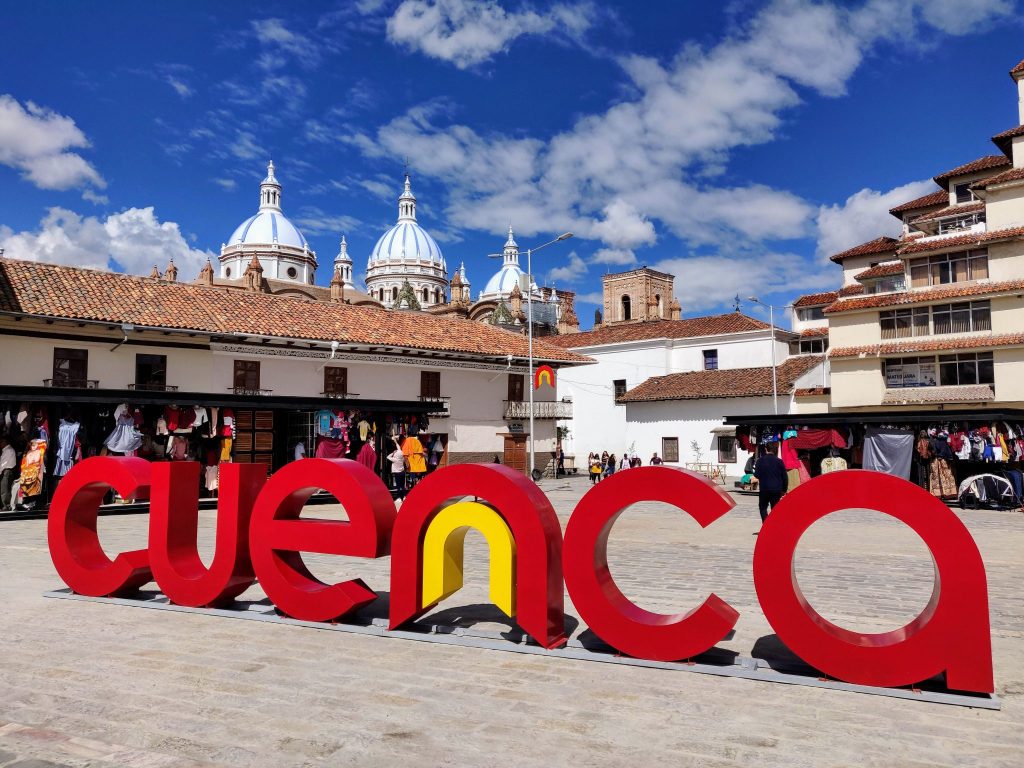
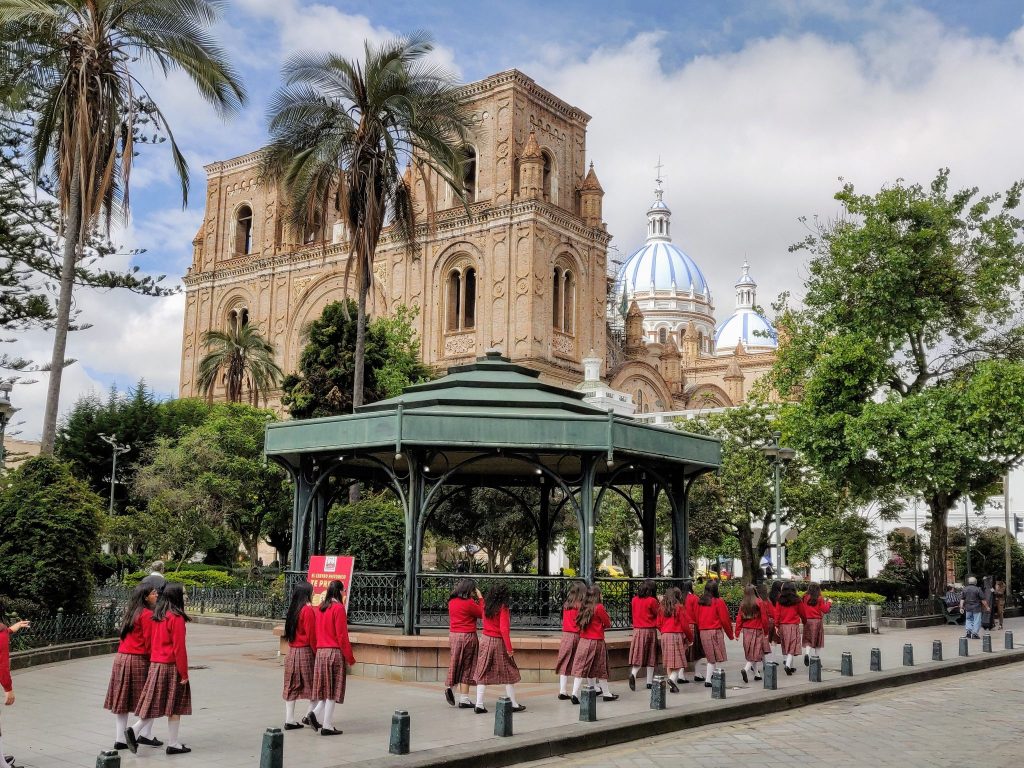
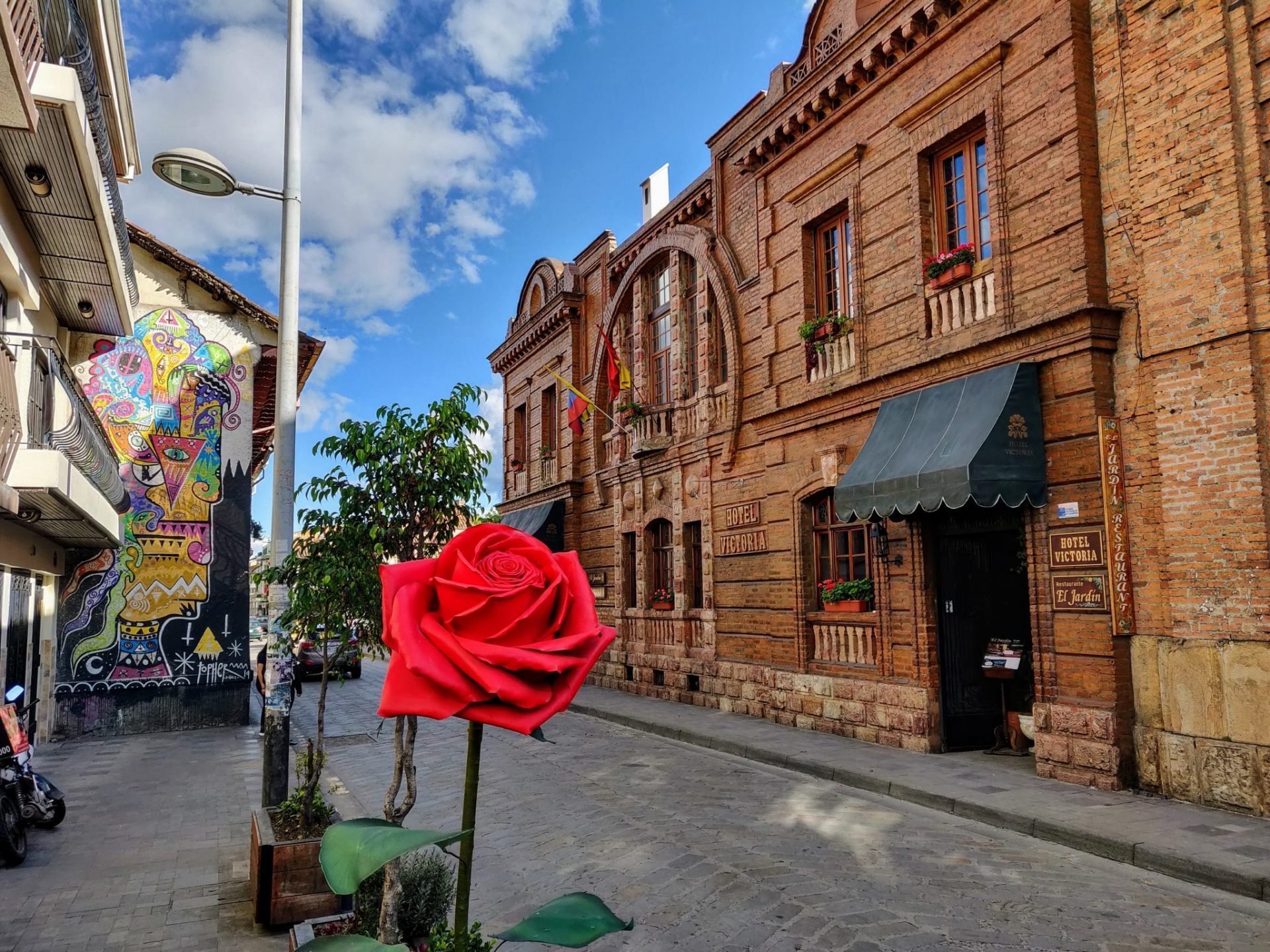
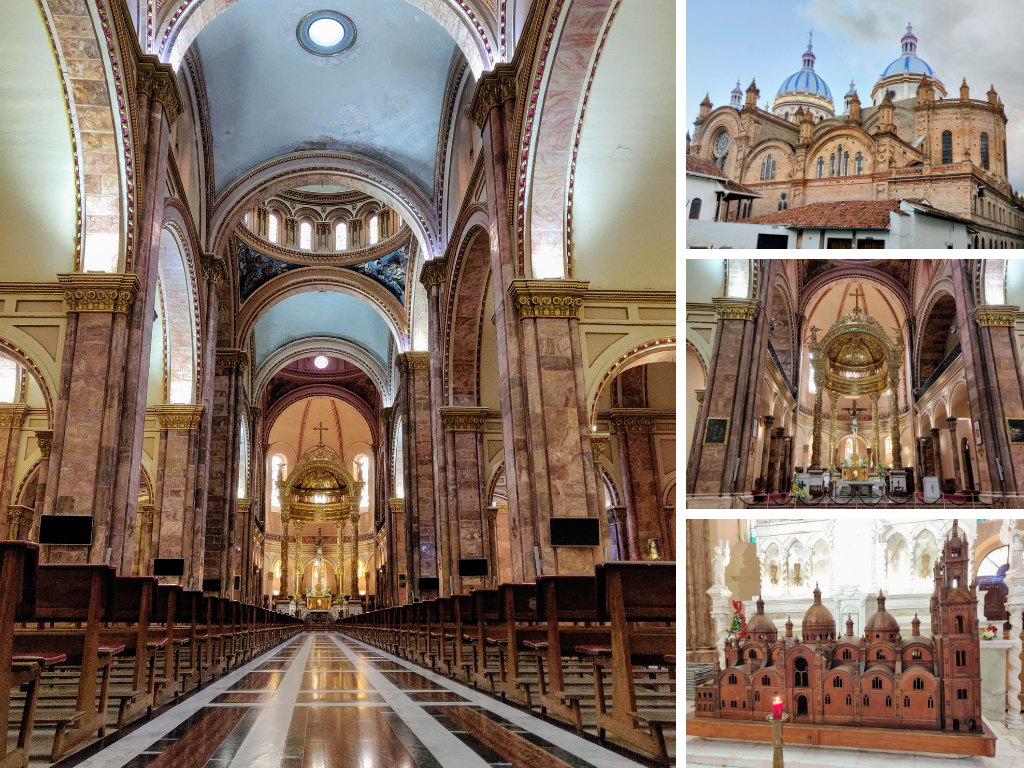
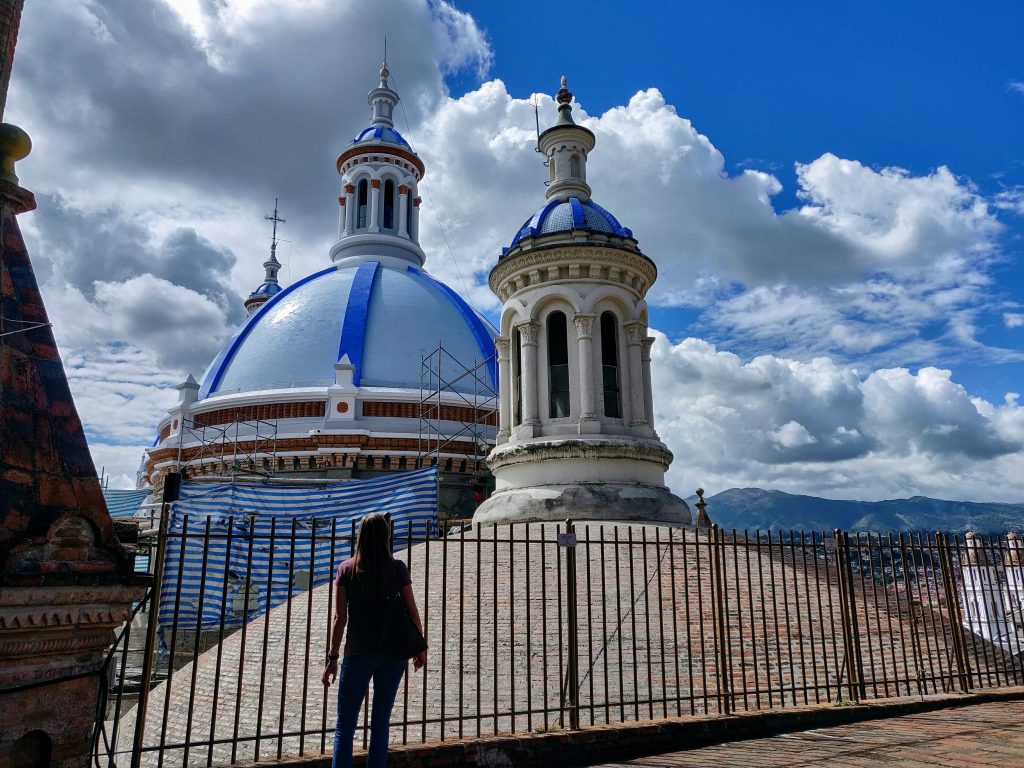

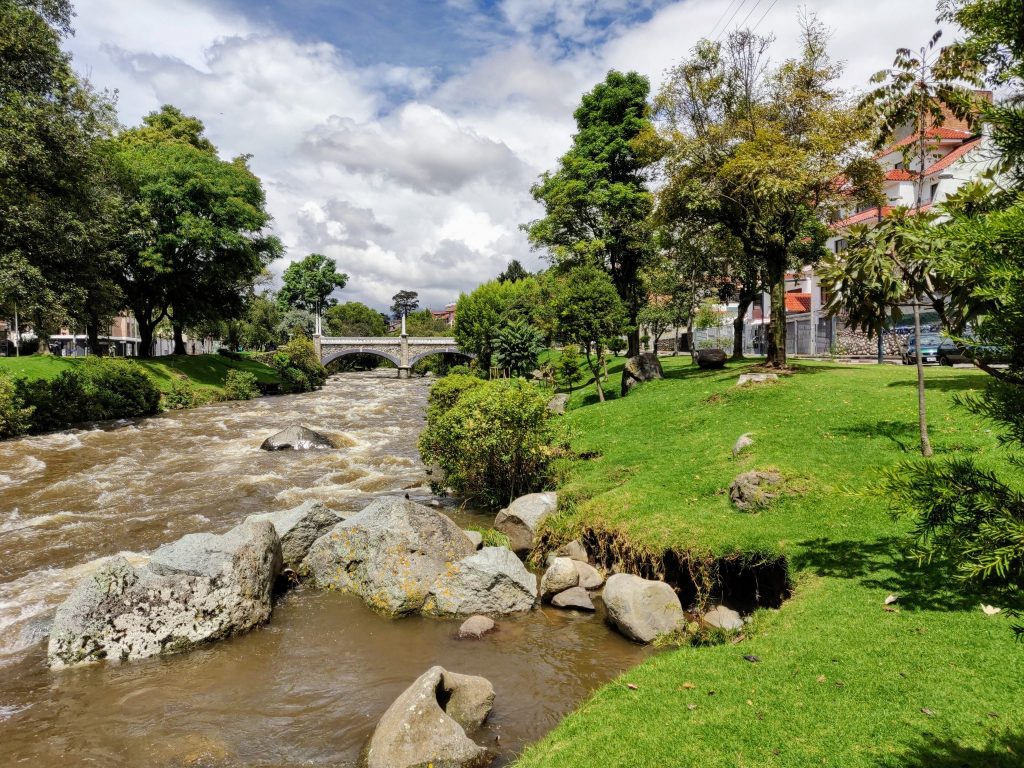

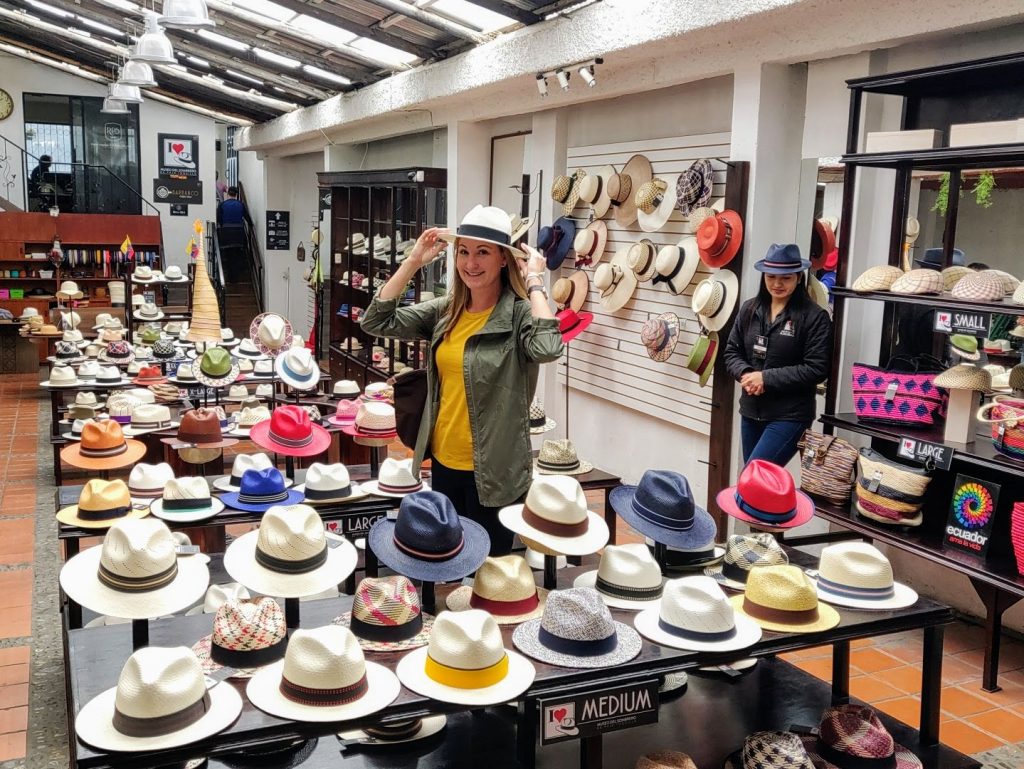
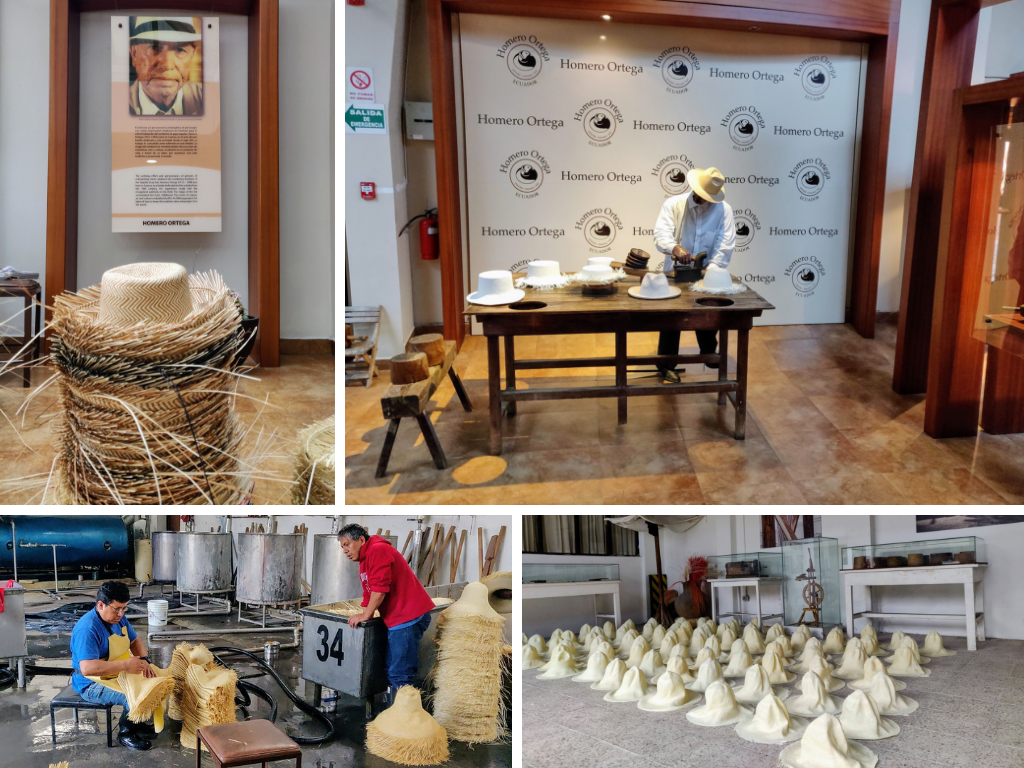
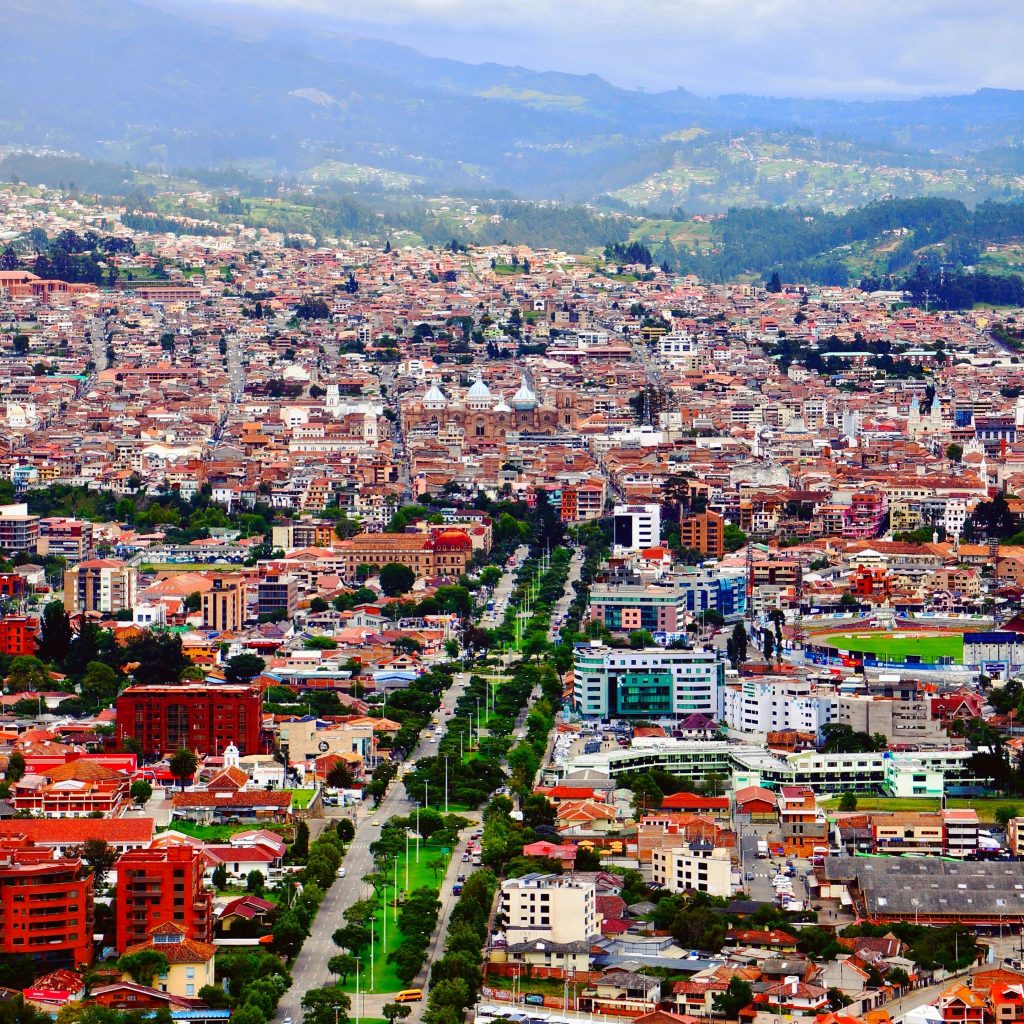
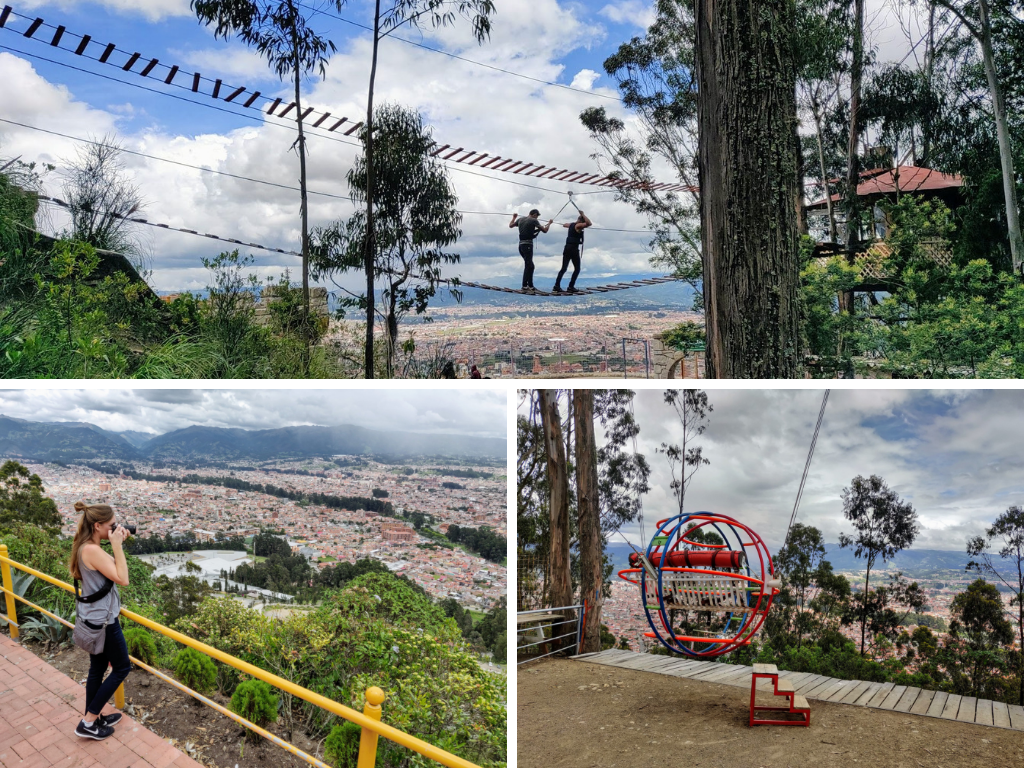
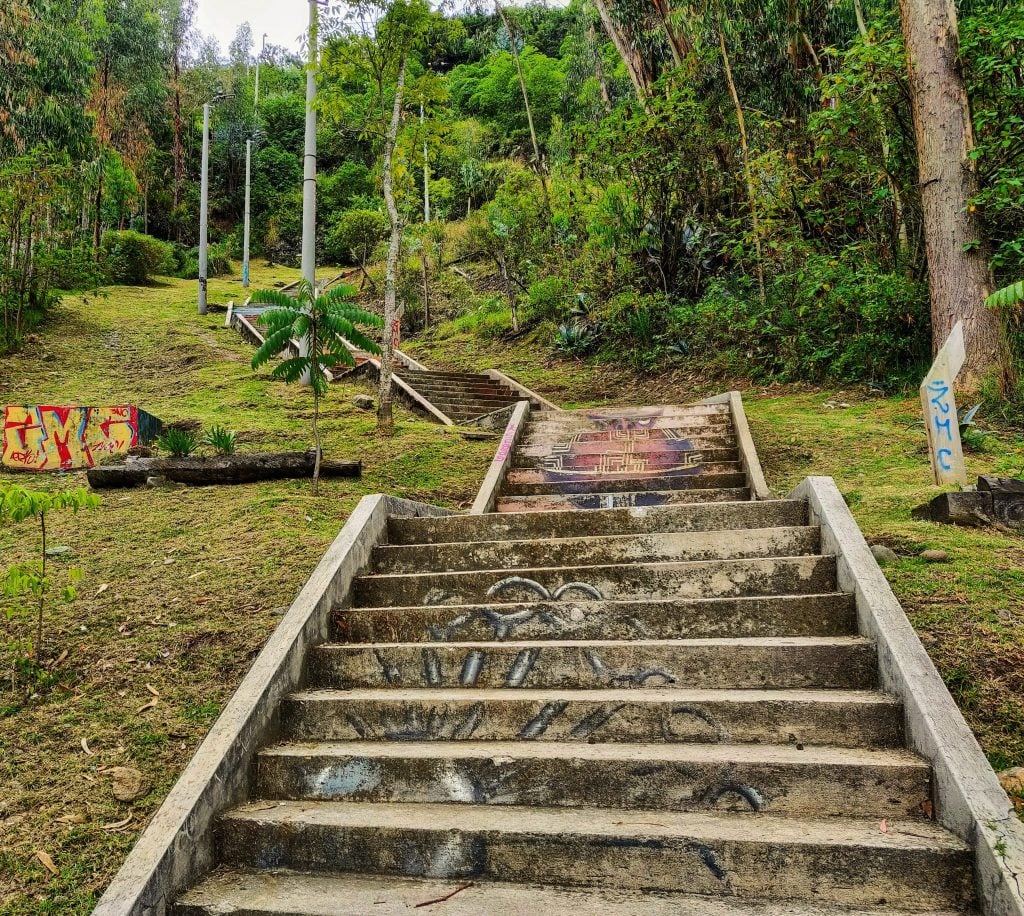
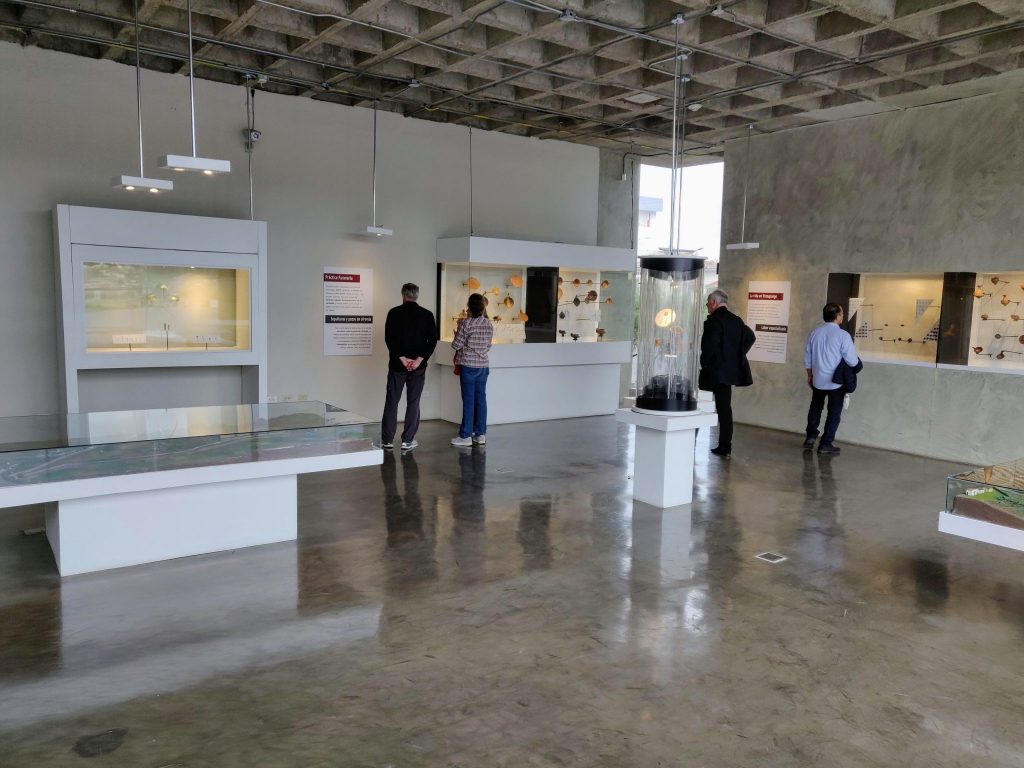
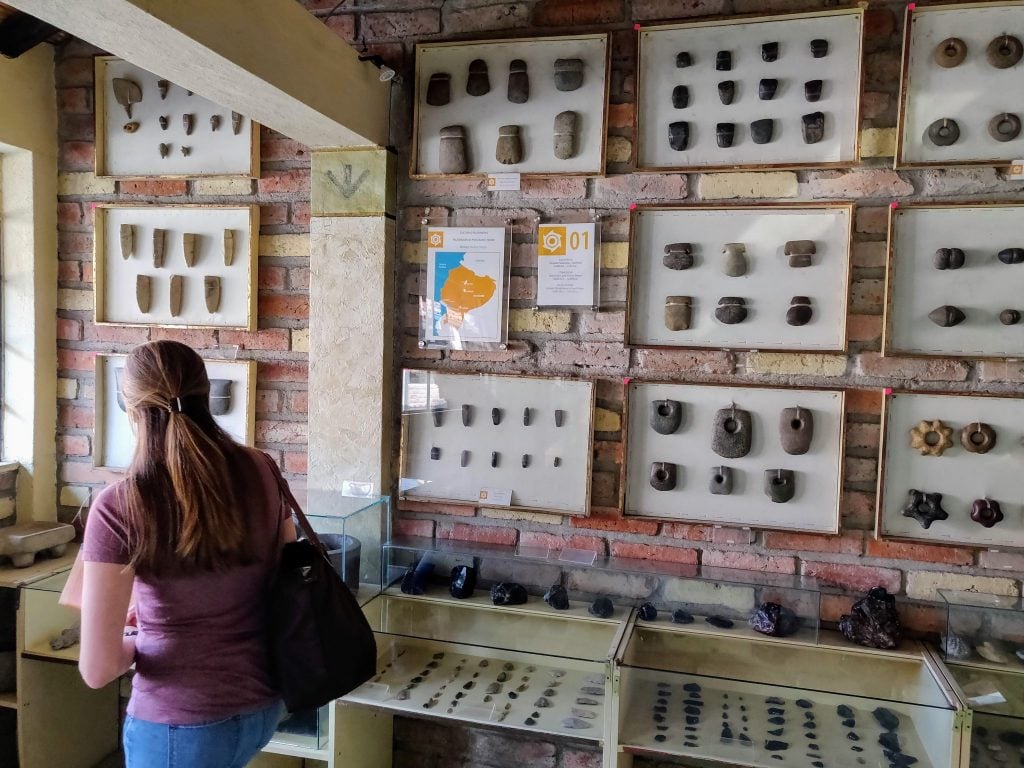
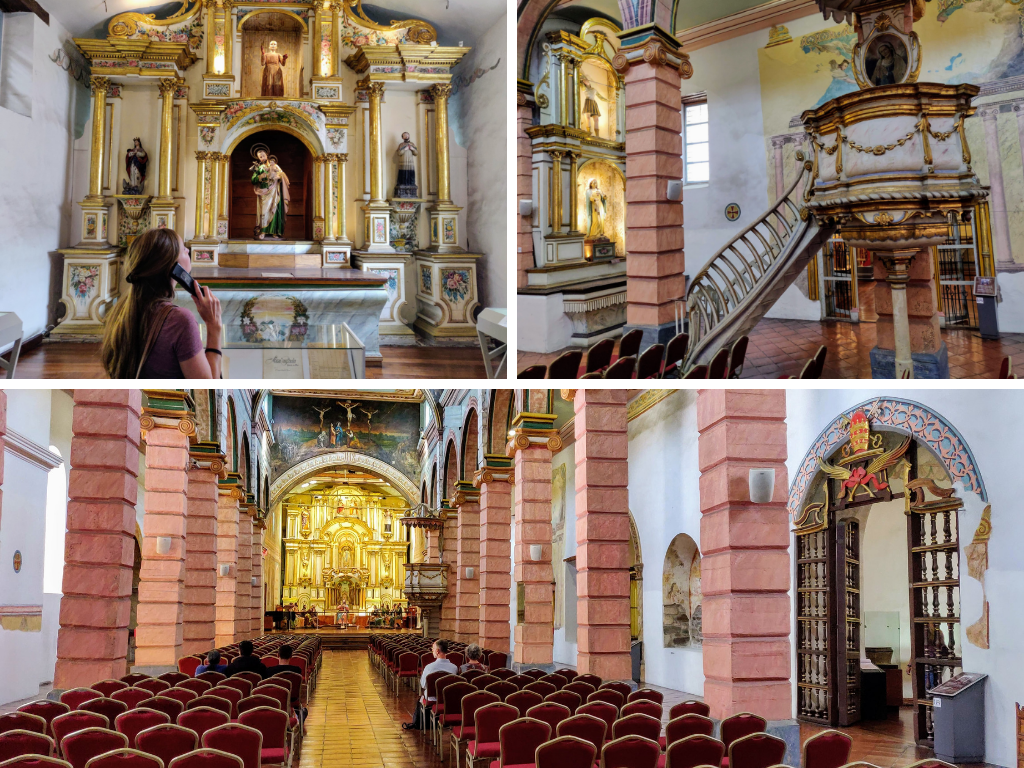
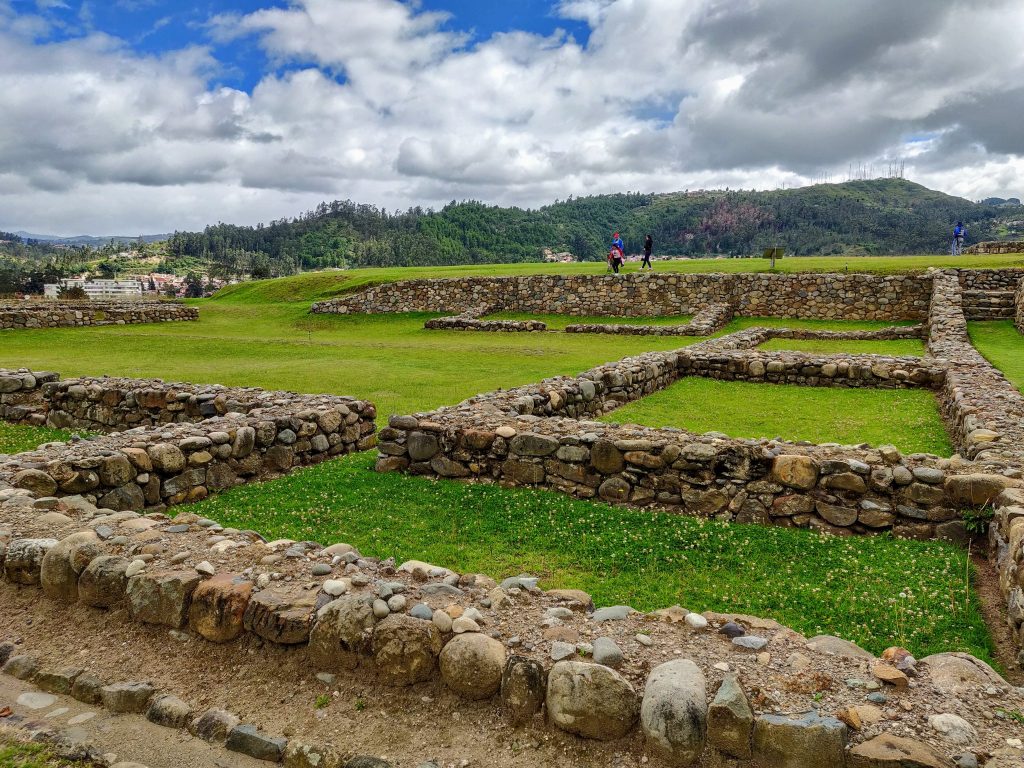
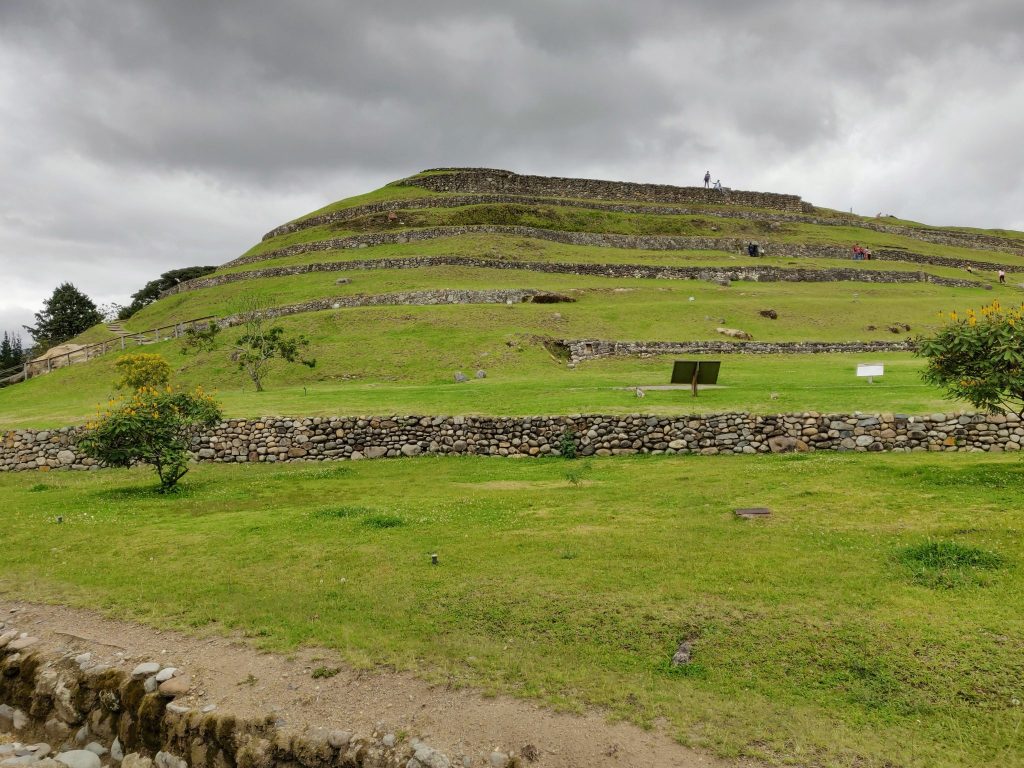
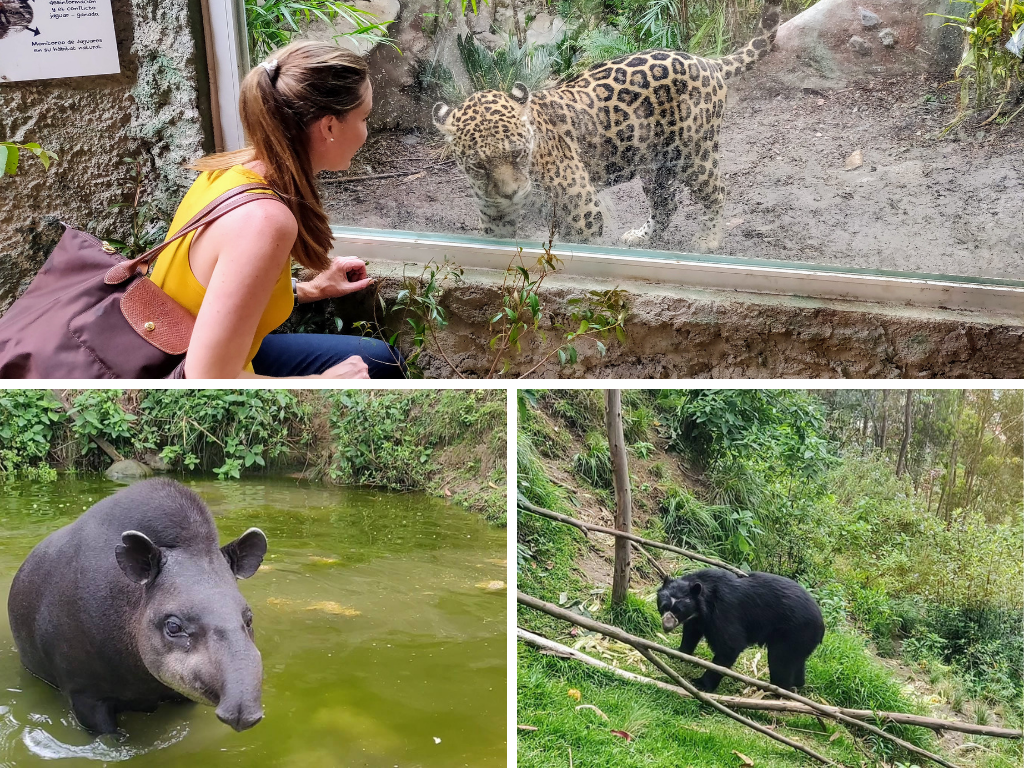

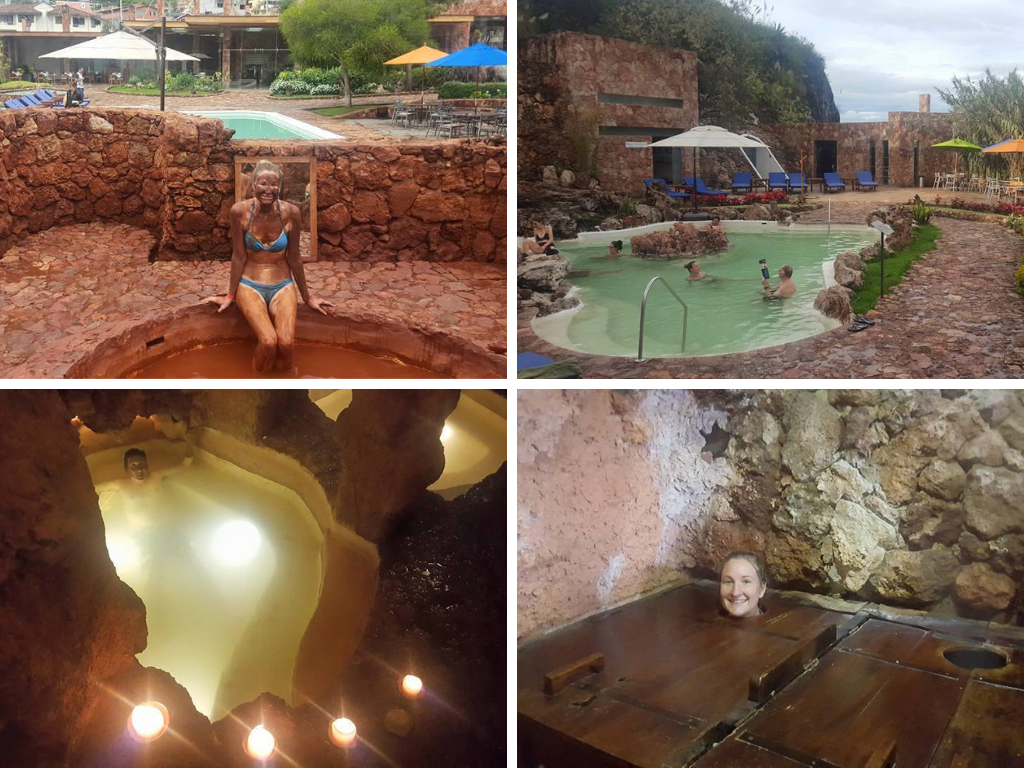
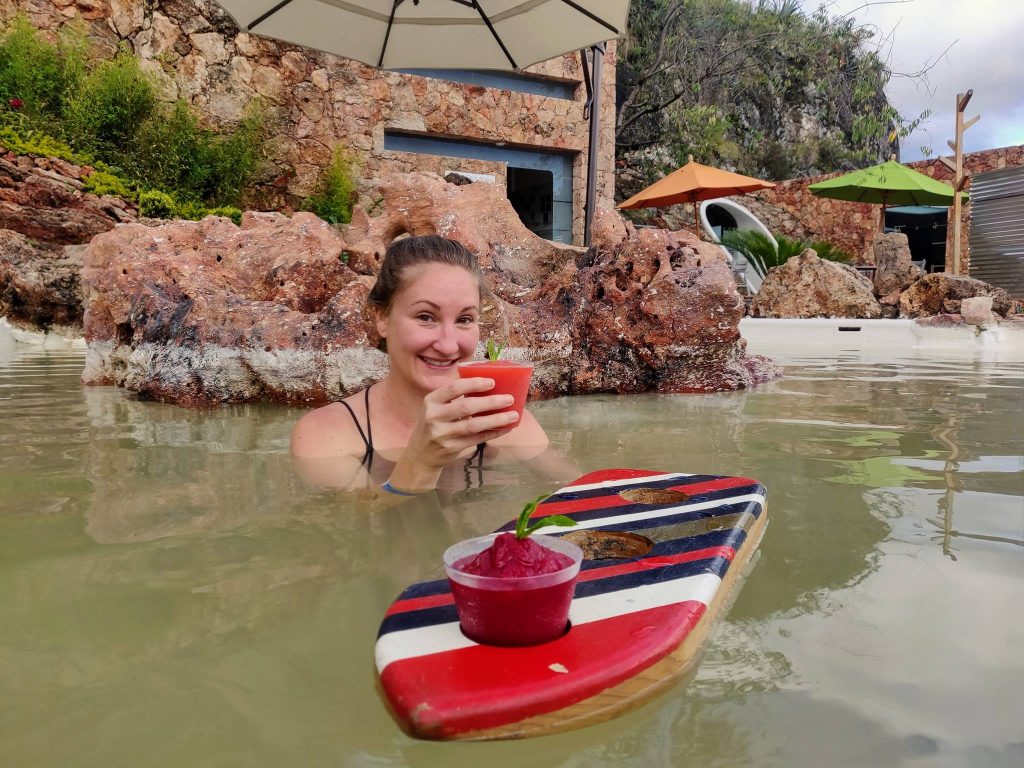
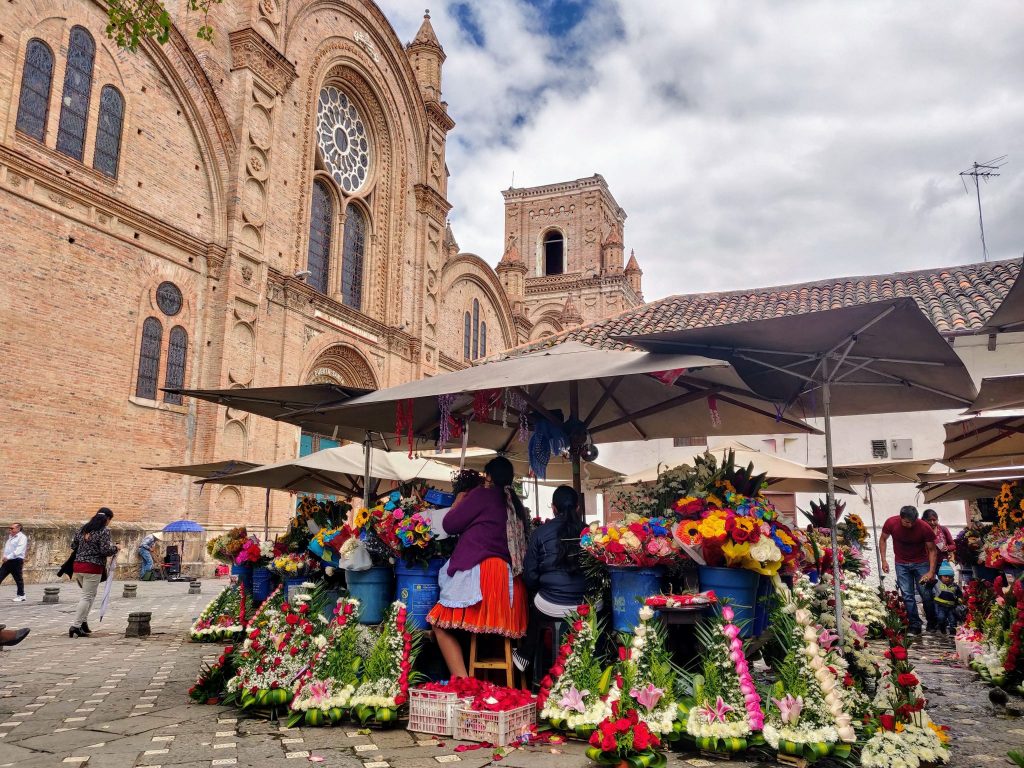

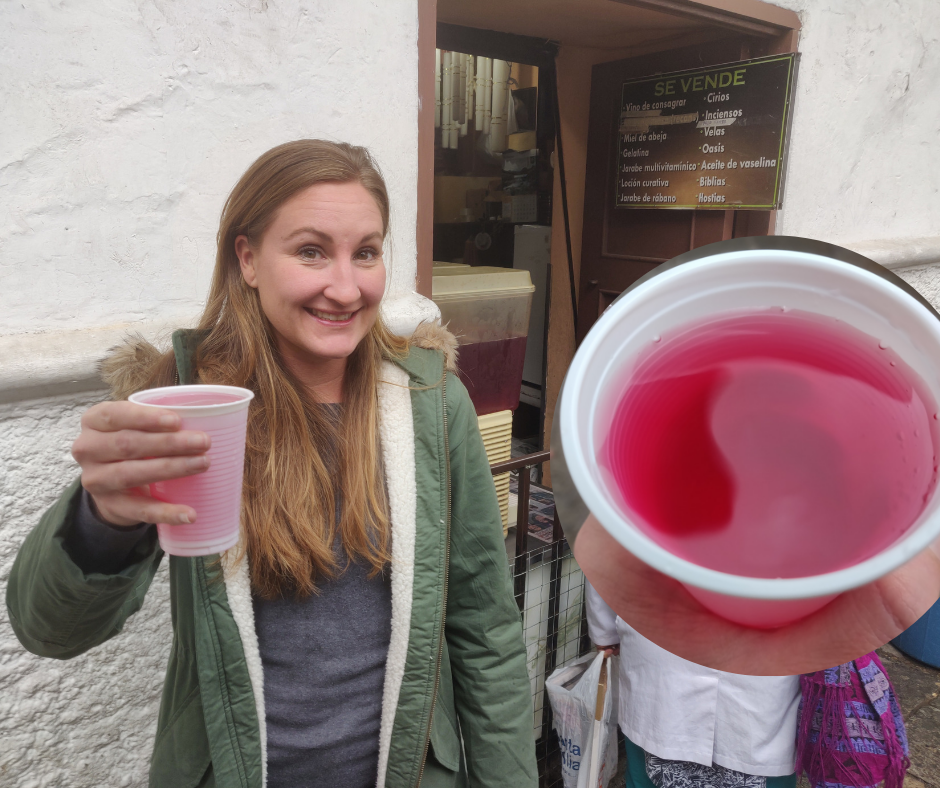
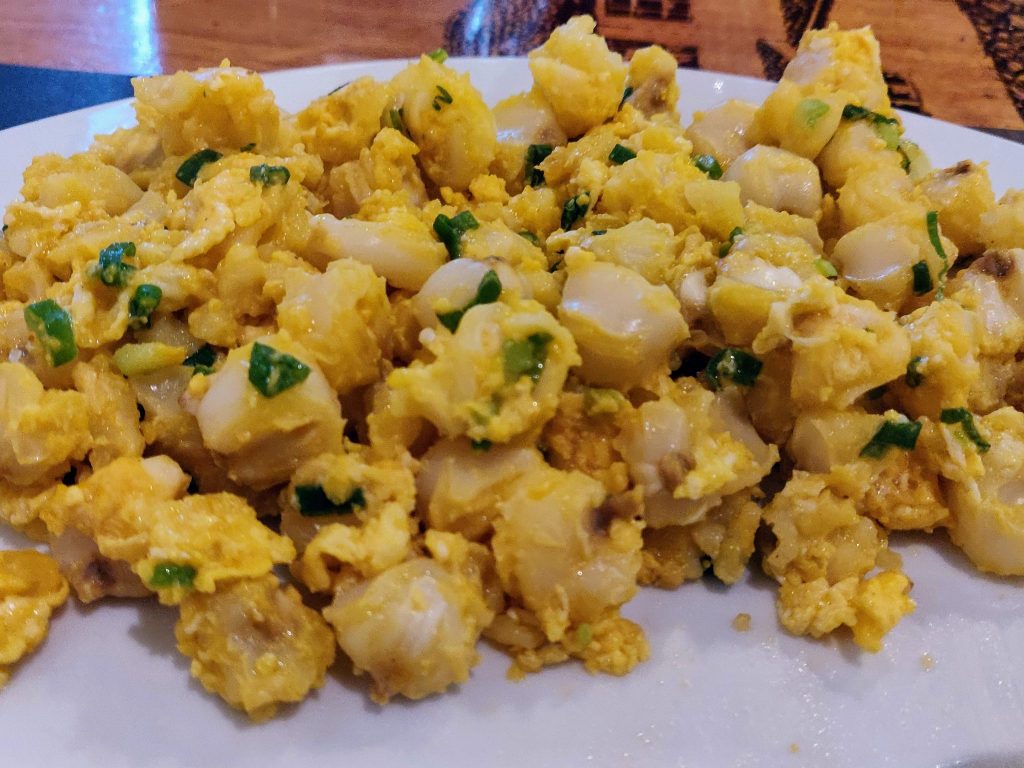
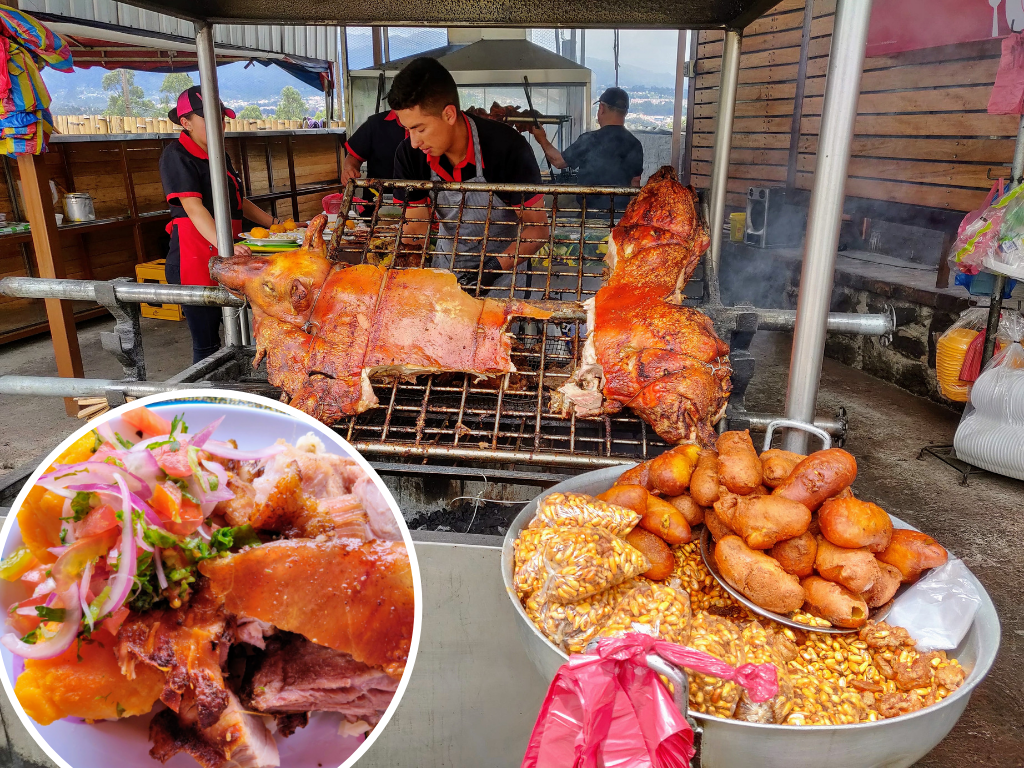
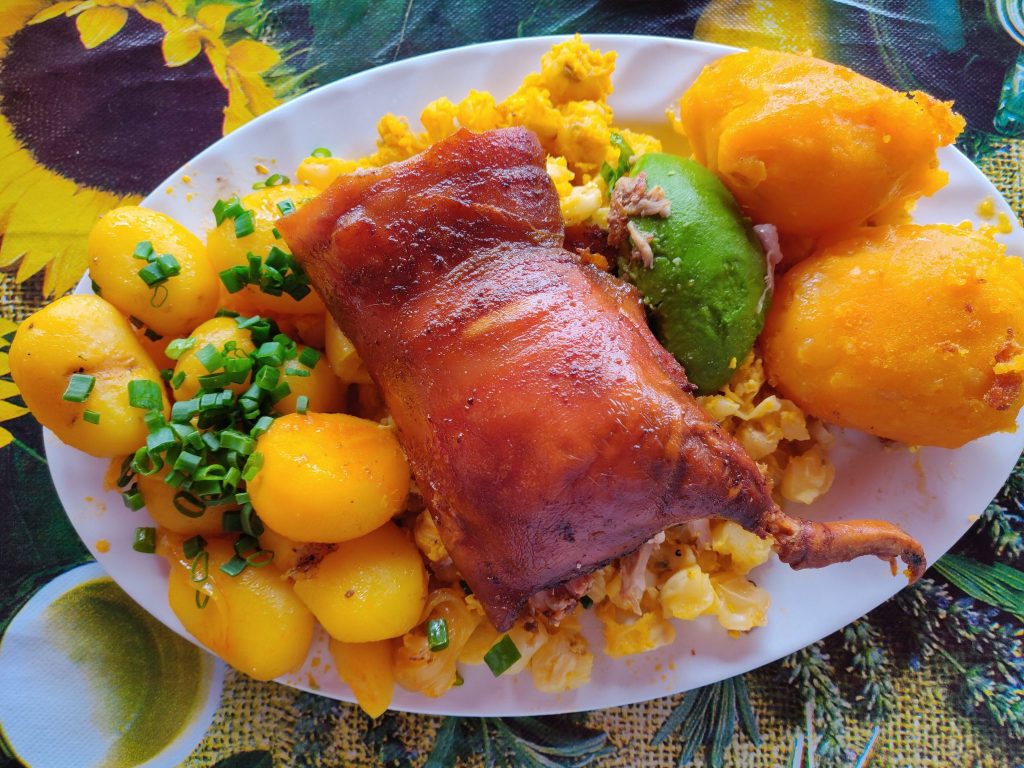
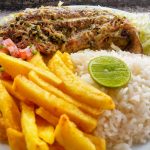
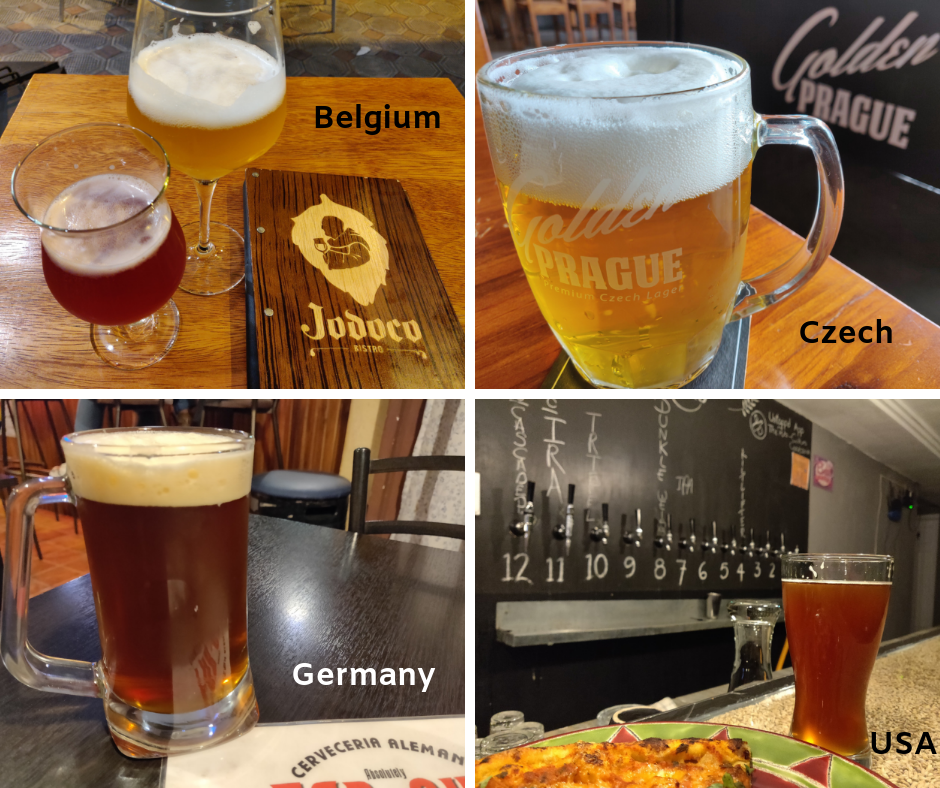
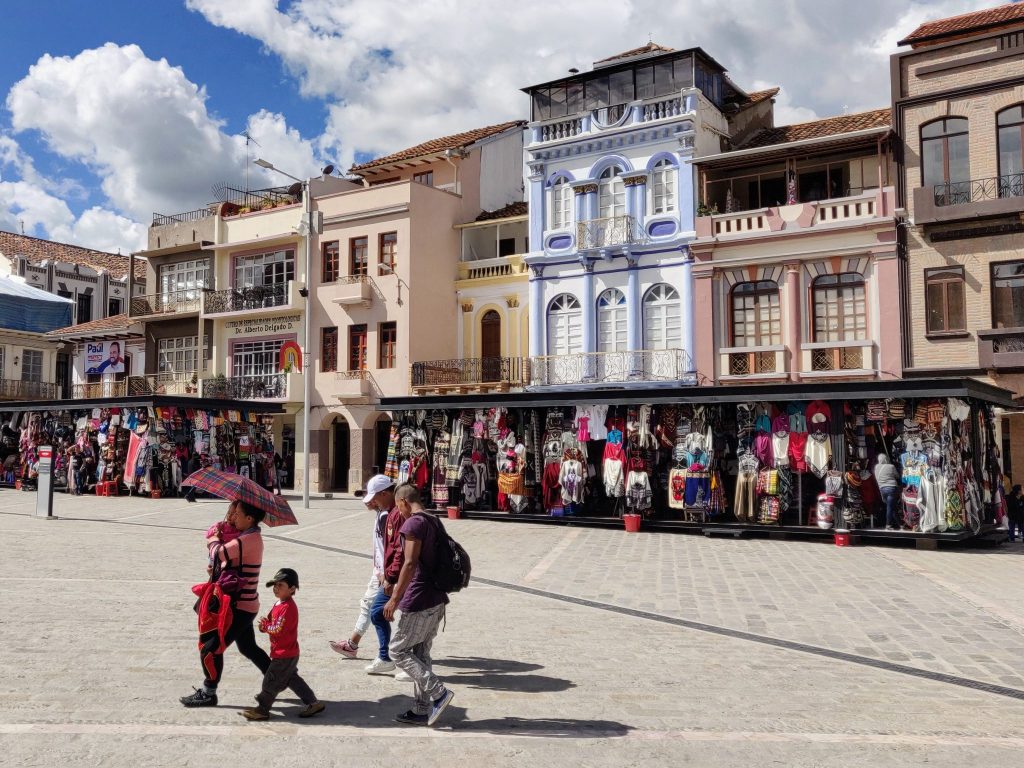
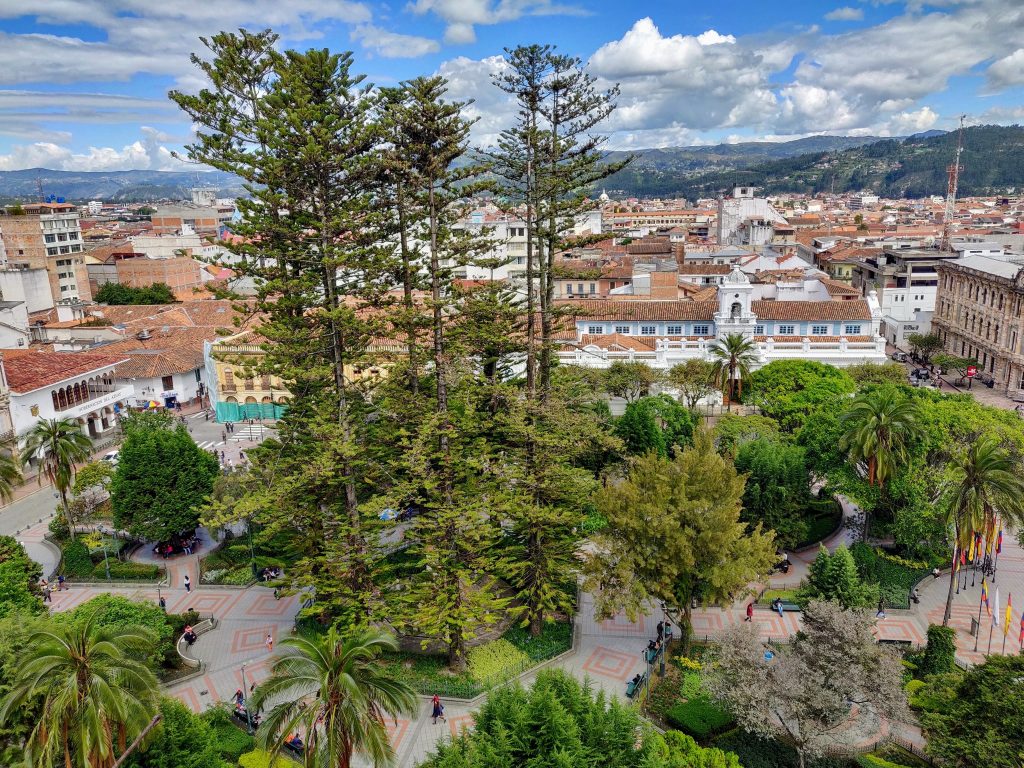

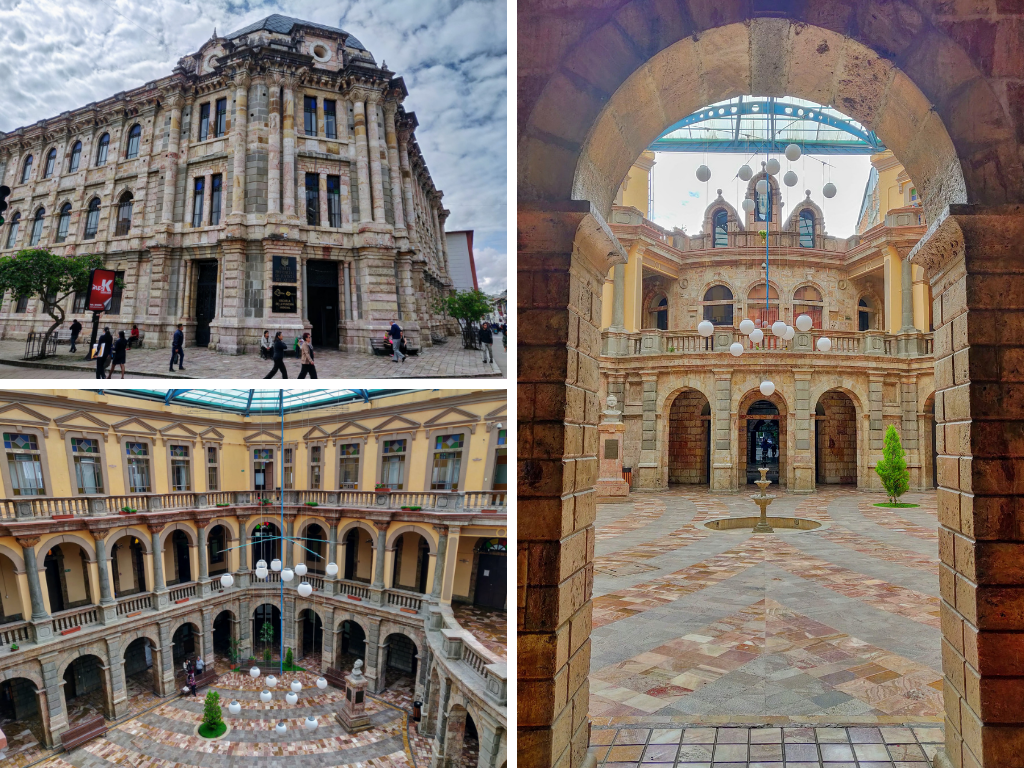

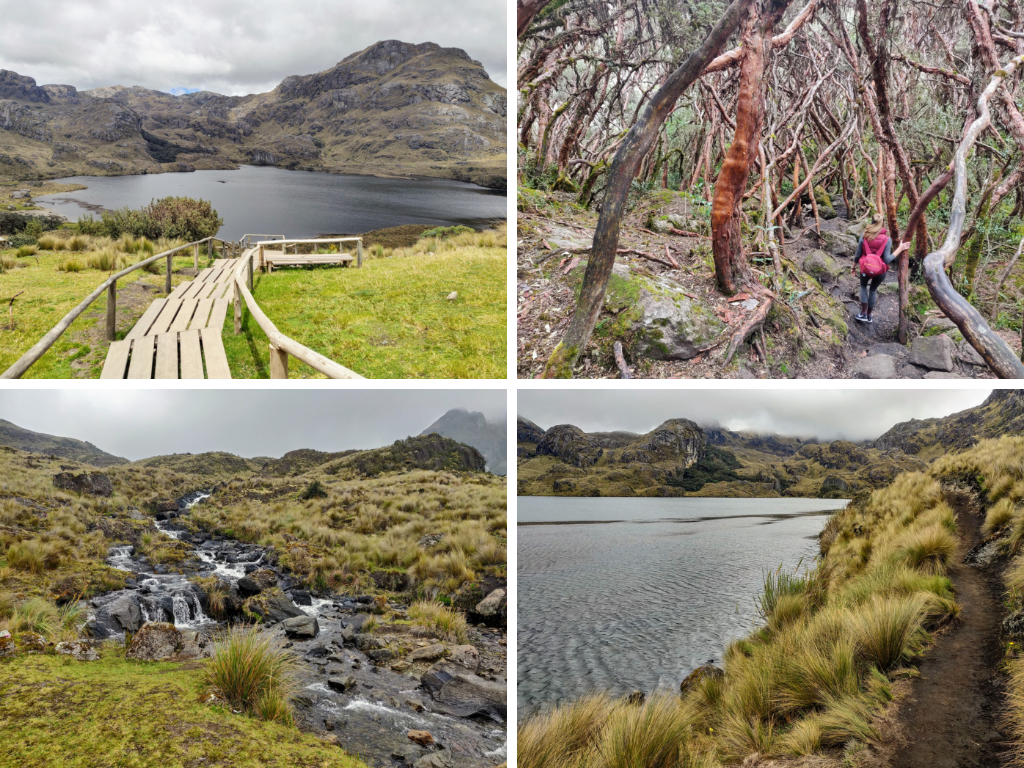
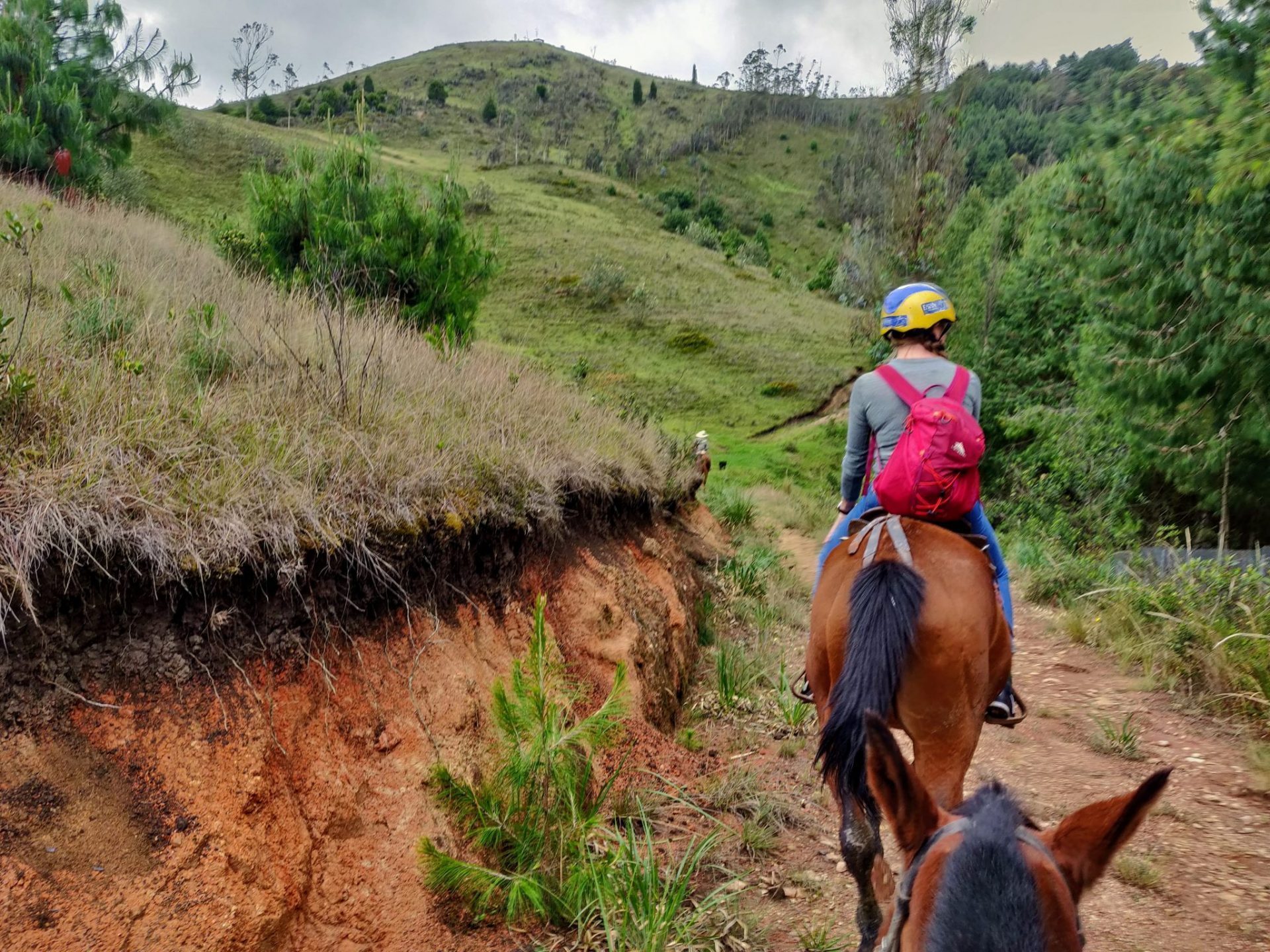
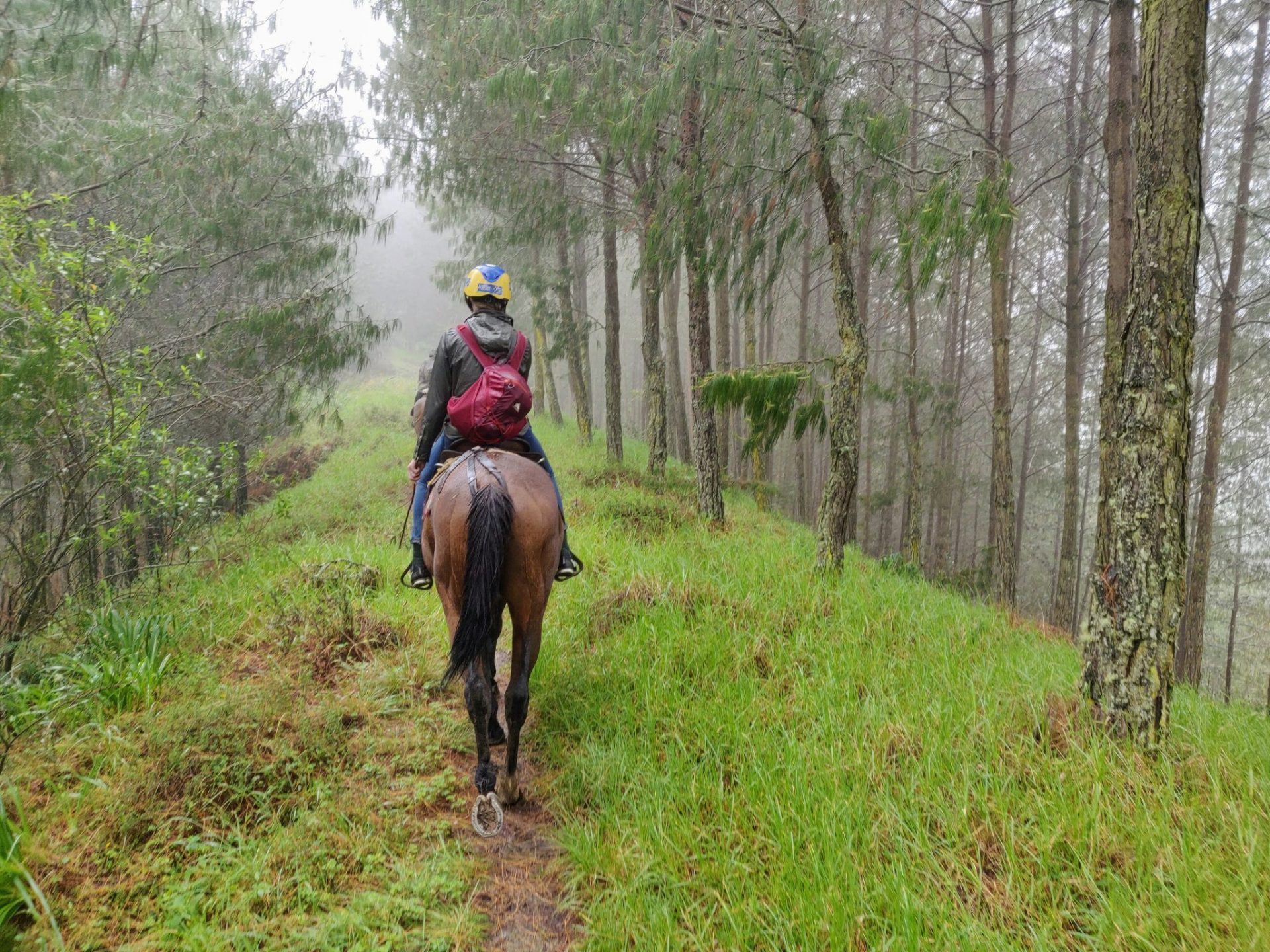
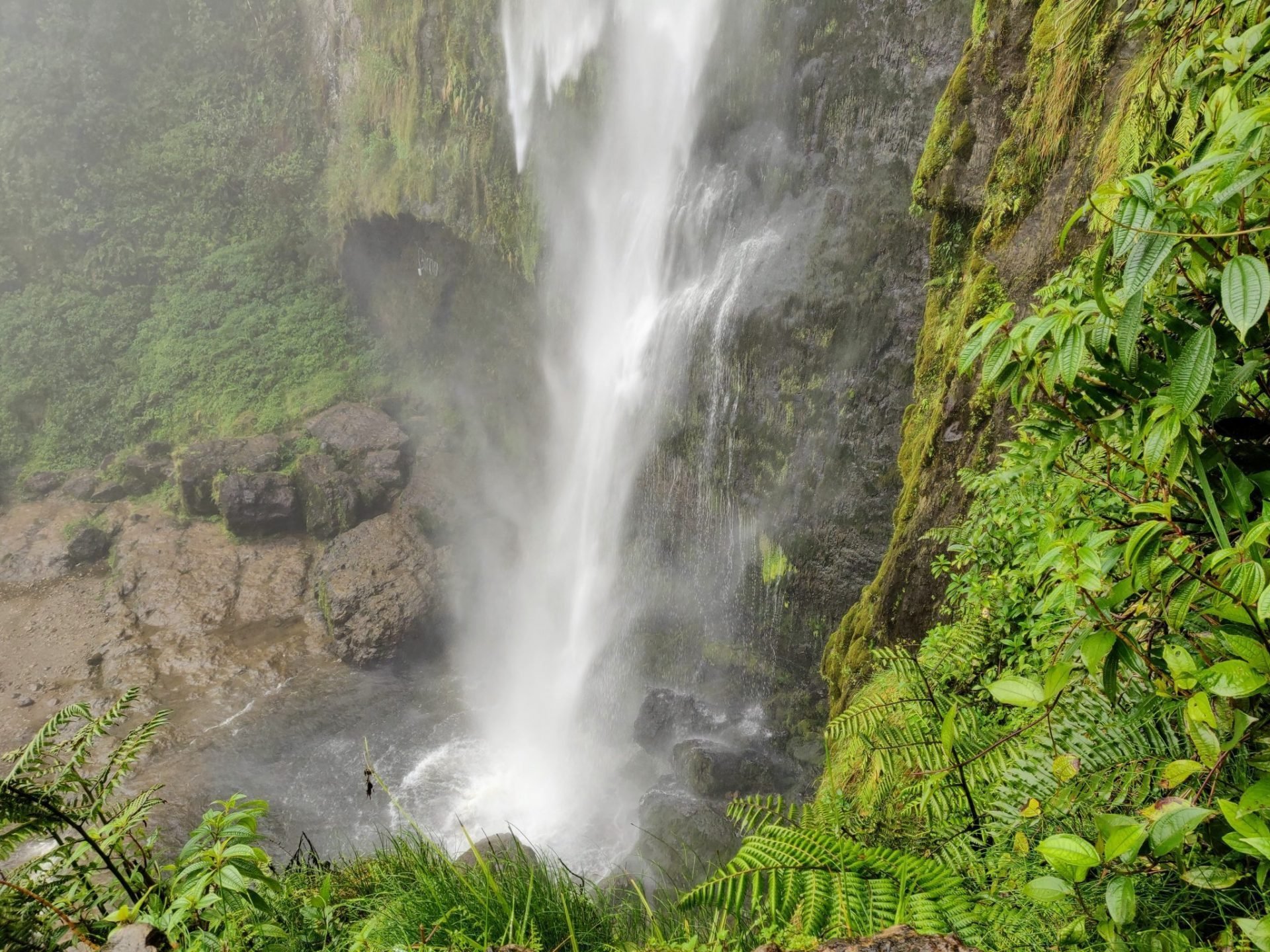
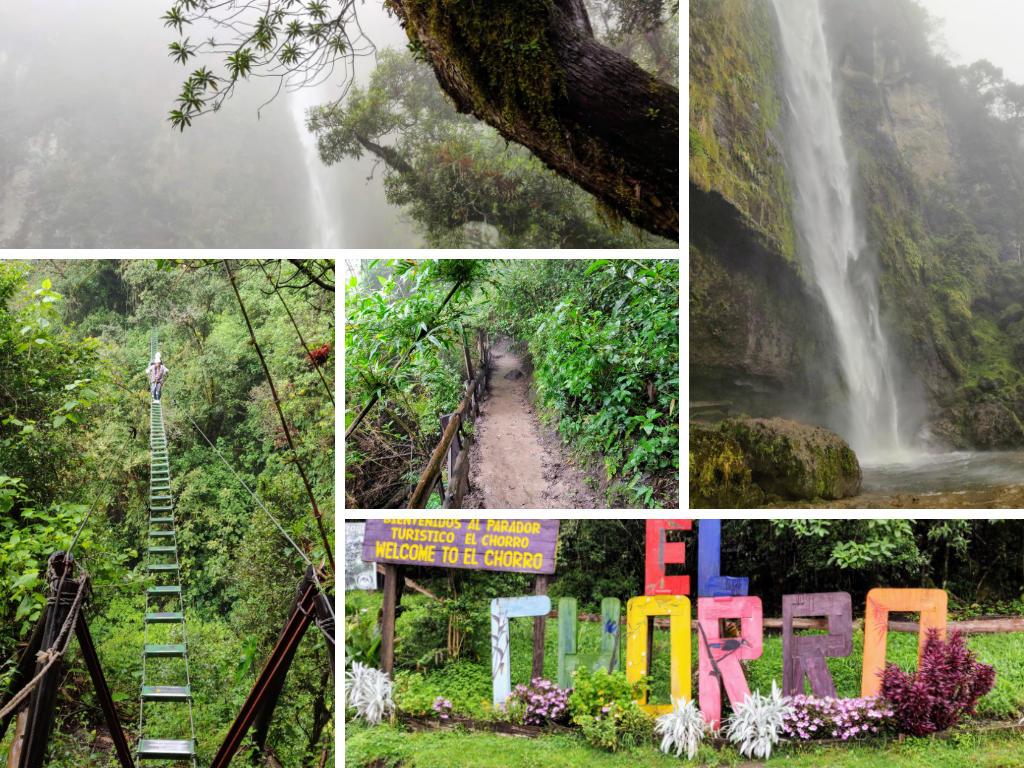
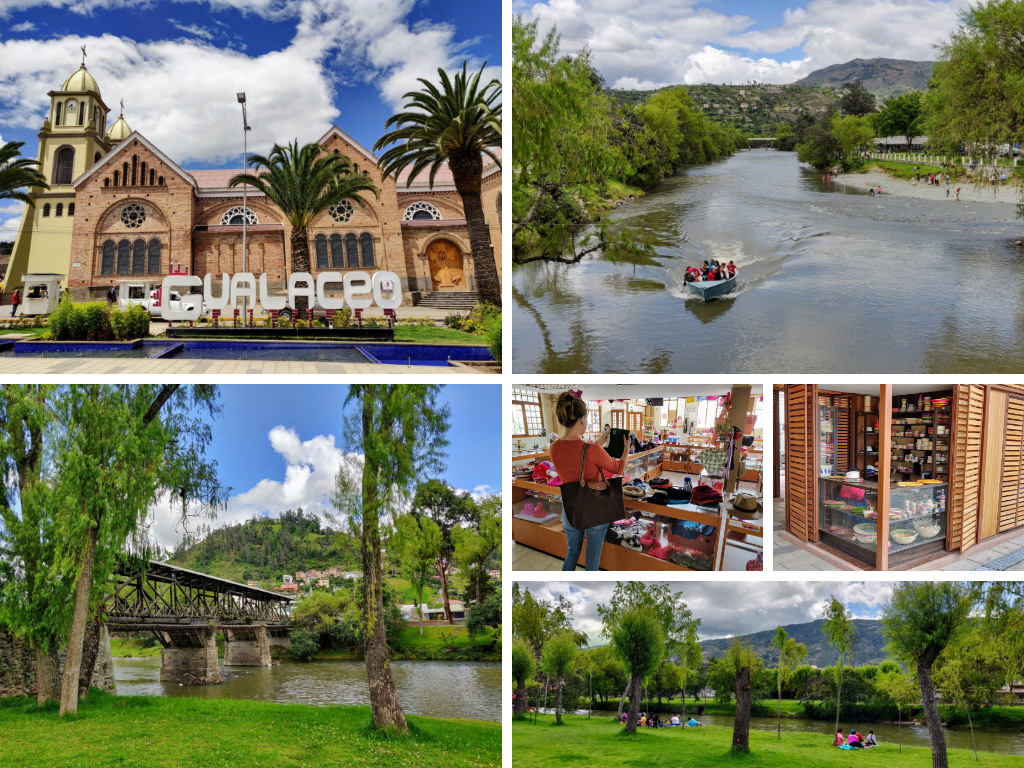
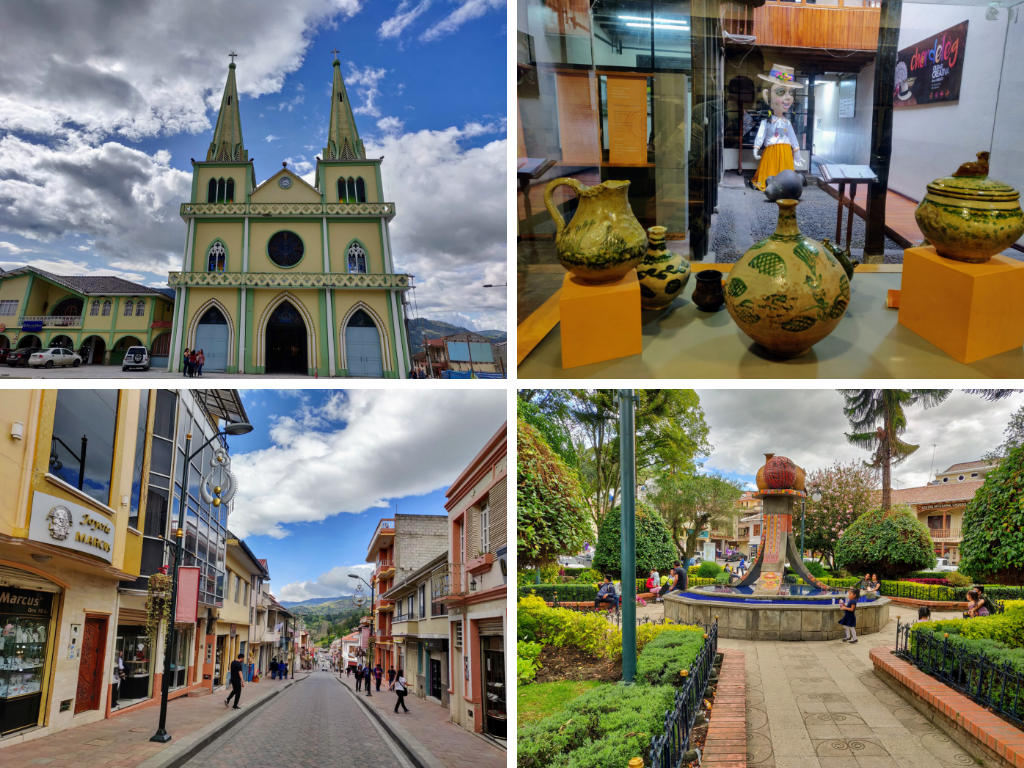
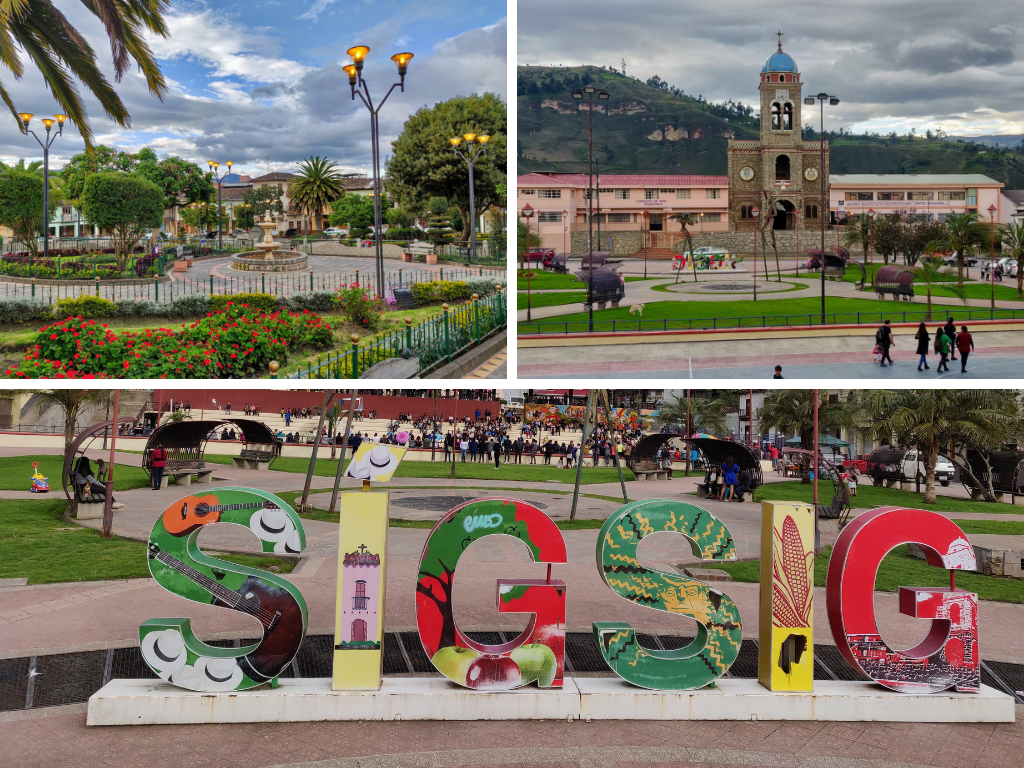
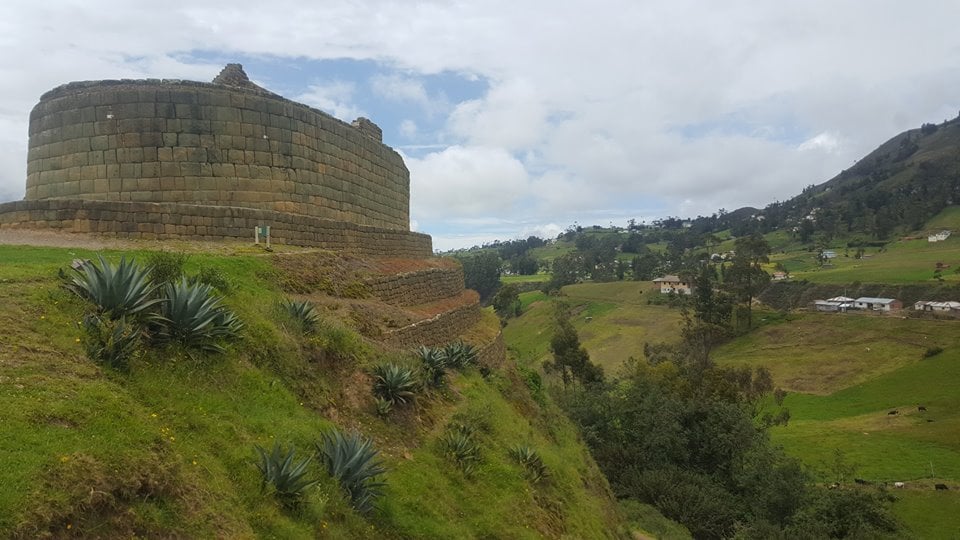
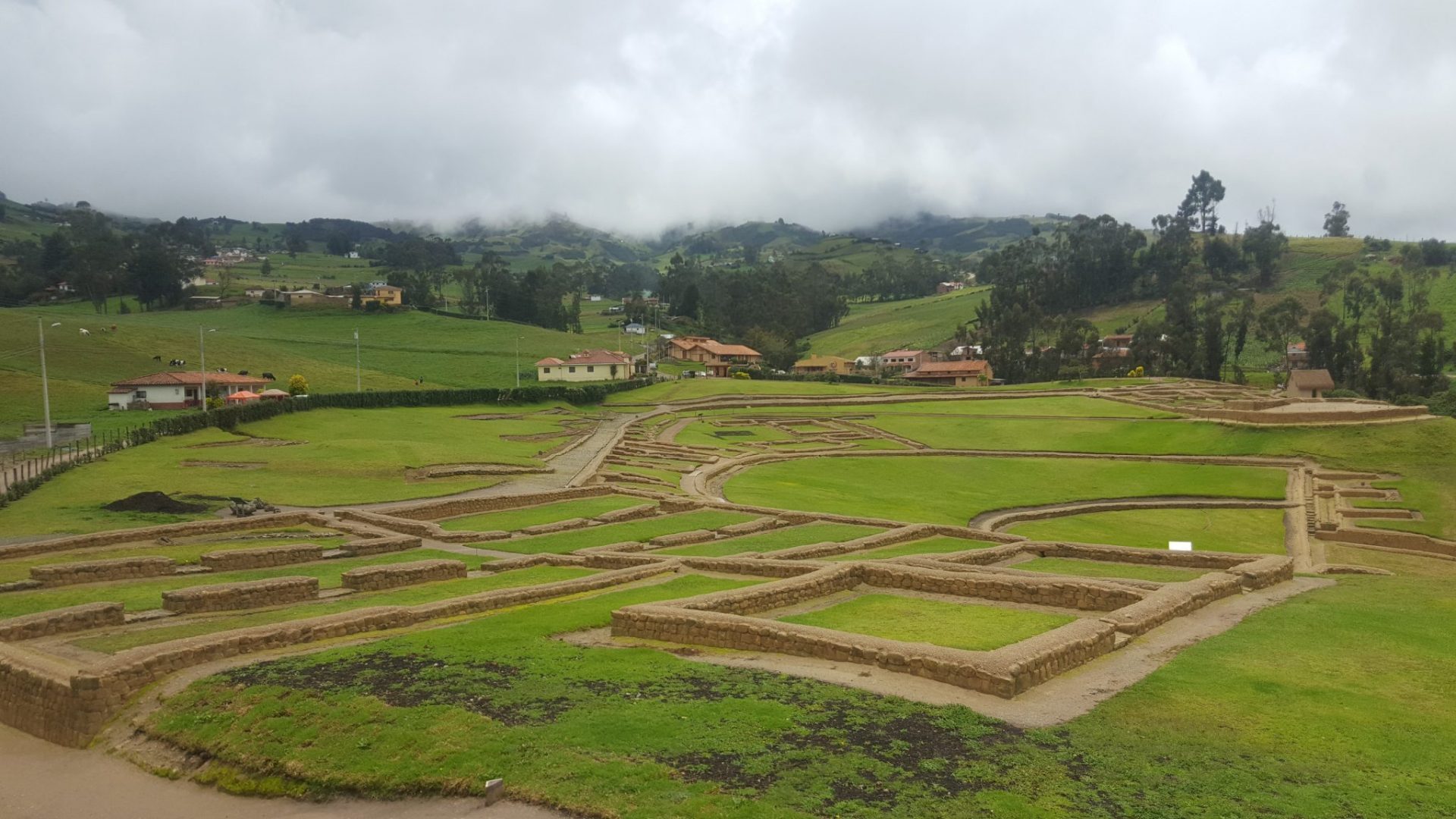
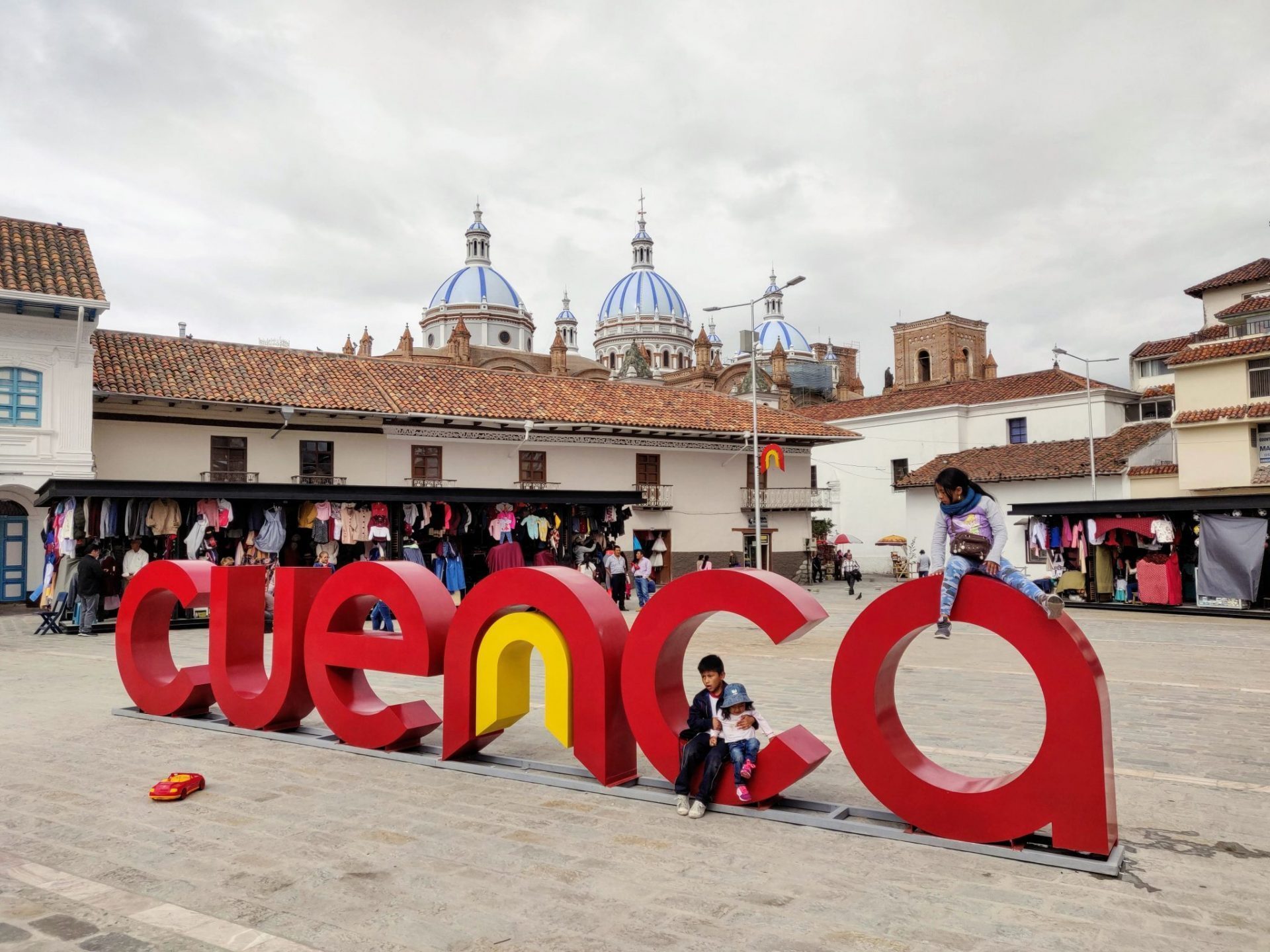
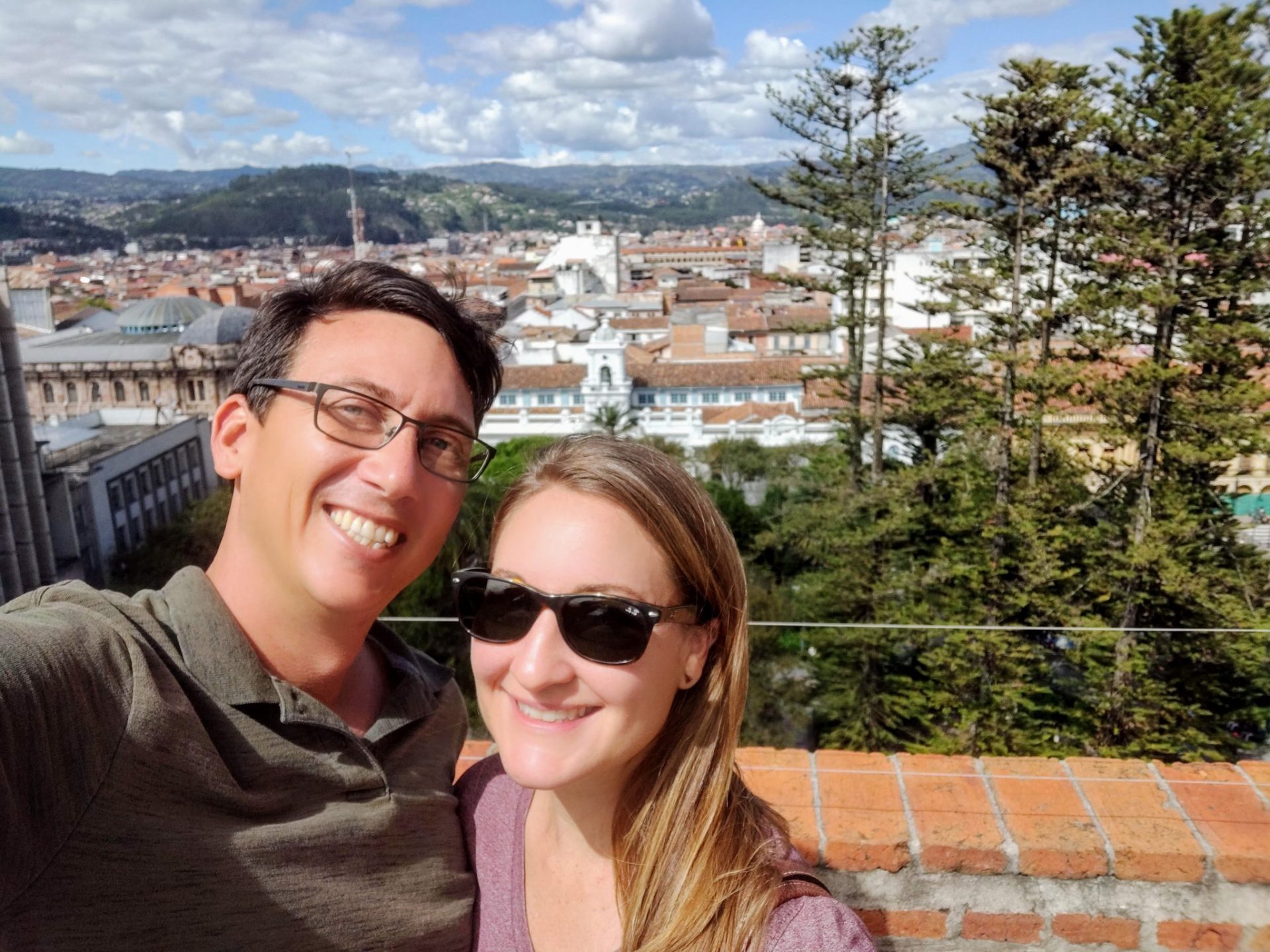
Unfortunately, the free Sunday bicycles no longer exist as I just discovered. It’s been privatized and you now have to pay $9.20 for a membership. My Spanish is limited but the person at the shop was trying to explain something about the membership card which I think meant something like you have to pay additionally for each individual use. Anyway, obviously not worth it if you’re only using it the one time. Pretty sure I will find a rental from a shop for $2 or $3 for the day.
Thank you for this amazing guide! So extremely helpful and useful! We are using it!
May 20th, 2022. The bus to Cajas only runs 3 times a day, with the first at 1020am. I showed up for the 7am and waited 2 hours before giving up, then saw the sign on a random ticket window.
Hi guys,
Lash here of LashWorldTour…
OMG! That ‘limpia’ cleansing video was hilarious!!!
Thanks so much for sharing.I will definitely go for my limpia while in Cuenca. Sooooo funnnnyyyy! Can’t wait.
cheers, Lash
Really appreciate your guide, I read it on my flight from Quito and had lots to check out by the time I landed
My friend Kathleen and I are planning a trip to Cuenca next March. Your guide is very informative and useful. While there, we’ll definitely make use of your recommendations . Thanks for the advice.
The best travel guides! PERIOD.
Thank you.
It help me safe a lot money.
I would suggest people consider visiting some of the parques (parks) in Cuenca, particulary Parque de La Madre, Parque Paraiso, and the new Botanical Park as well, (google parques Cuenca for a list). Also for the adventurous shoppers the largest fiera in town, Fiera Libra but beware pick pockets (anywhere really). Finally, if sports minded, take a look at the Coliseo Jefferson Perez, 8 tennis courts, 3 swimming pools (one Olympic), volleyball, boxing, racquetball, and a large stadium that has a basketball court and also hosts concerts. In addition to walking the Tomeboma, add the Yanuncay River to the lost, lots of walking and bike trails along all the rivers.
We went to Cuenca just before Christmas a few years ago (not sure of the exact day), and watched their Christmas parade. We have been to over 100 countries, and this was one of the most fun things we have ever done. The parade is completely free-form. Anything is OK. Huge trucks towing flat-bed trailers with high-school bands seated on the trailers, beautiful ladies in evening gowns on horseback, farm tractors decorated with Christmas tree ornaments, and one group even had a Maypole. They would set it up, stretch out the ribbons, dance around it 5-10 times, tear it down and run up 100 ft, and do it again. I don’t remember any professionally constructed floats. A hotel let us go in and watch from an empty room on the 3rd floor. We must have watched for an hour and a half, and the parade was in full swing when we got there, and it hadn’t slowed down when we left. The street was jammed with people, animals, and vehicles. We estimated that 100.000 people passed our viewpoint while we were watching.
We used this post on our trip to Cuenca…. great and through advice. Thank you!
This is a GREAT guide. Thank you.
Hi, I found your website when I was looking for things to do in Cuenca. And now I’m scrolling through all the information you’re offering about Ecuador. It’s really amazing. You’ve done a great job with that.
I’m going to Ecuador and Galapagos in November. It will be my first time in South America and I found a lot of useful information here. I’m very excited and looking forward to it
greetings from Germany
Sabine
Thanks so much for the kind comment! 🙂 It’s very encouraging and motivating to read. Hope you have an excellent trip to Ecuador and the Galapagos!
Hi! Do you have any recommendations about the trip from Cuenca to Guayaquil? Some people say shared transport is risky (robbery/kidnap…) – what’s your experience?
We’ve found the Cuenca-Guayaquil bus to be just fine on the many times we’ve taken it. I think the risk of kidnapping is extremely low and virtually nonexistent. (Personally, we’ve never heard of it occurring.) Petty theft is a more legit concern, although still fairly rare and can be easily prevented. Simply keep any valuables close to you. Don’t store anything valuable under your seat or in the overhead. We’ve probably taken nearly 100 different local buses throughout Ecuador and never encountered any theft. But it has been known to happen. If the bus is of concern, there are also shuttle vans that regularly go between Cuenca and Guayaquil, which costs only a wee bit more than the bus and may prove more comfortable. Private transport is another option, although that will cost significantly more. The tourism agencies in centro should be able to help you with the latter options.
My Grandson and me spent 10 days in Cuenca. We visited all the sites in Cuenca and Inca ruins outside the city. The food was great. For those who want a change there was a Pizza Hut. We ate the cuy. It was served whole and it taste like rabbit or squirrel. Could not eat the brains. Ecuador was worth the money and time to explore. We climbed to the top of Tres Cruses. Give it a try.
For the bus to Ingapira, the ticket office was in front of Turn 1 and was the bus to Canar. There was a wall size picture of Ingapira to help you find the correct office. The bus takes 2 hours and Ingapira is the last stop.
Have you found better was to get around Ecuador than the interstate buses? They are slow, stop everywhere, no bathrooms even if the trip is 10 hours and crime is rampant as we found out. You must keep your backpack in your lap. Not on the floor and not in the overhead.
We found a shuttle from Cuenca to Villabomba through Hostal La Cigal. But now we need to get to Banos then the Quiltoa loop, Mindo and then the Amazon.
Thanks for the added tip about the Ingapirca bus office.
As for busing around Ecuador, we tend to travel fairly short distances on them (usually not more than a few hours), so fare just fine. We’ve likewise heard many cautionary tales about theft on the buses, but after taking probably over 100 different buses across the country, we’ve never seen or experienced it firsthand. Still, we always keep our electronics bag on the floor between our legs or on our lap, just in case. Our greater concern on the buses is those precarious winding Andes roads.
There are two other bus companies that provide a higher level of service specifically catering to travelers that you may want to look into. They are Ecuador Hop and Wanderbus Ecuador. When going to the Amazon, you may want to consider an inexpensive flight from Quito. Also, many of the Amazon lodges and tours can provide transportation from Quito. Hope that may help and you enjoy your trip to Ecuador!
Thanks a lot for your wonderful guide to Cuenca. We just came from spending a week at that beautiful and quiet city and your tips were very useful to us. We were able to visit most of the places you recommend, and also try the local food. At the end, we want to go back, and spend more time the next time. We will be always grateful for the information you posted. Also, Galapagos now seems affordable thanks to your guide. It is now in our plans for the future. By the way, I bought the umbrella that you recommend, plus some other items from your list.
Thanks so much for stopping back by after your trip to let us know. It always puts big smiles on our faces when we hear these travel guides and tips are being put to good use. 🙂 Hope you do get a chance to return to Ecuador and maybe add in that Galapagos trip next time! It’s really such a unique place and has been a favorite eco-adventure for us during all our travels. ¡Buen viaje!